Unique baby names from the year you were born
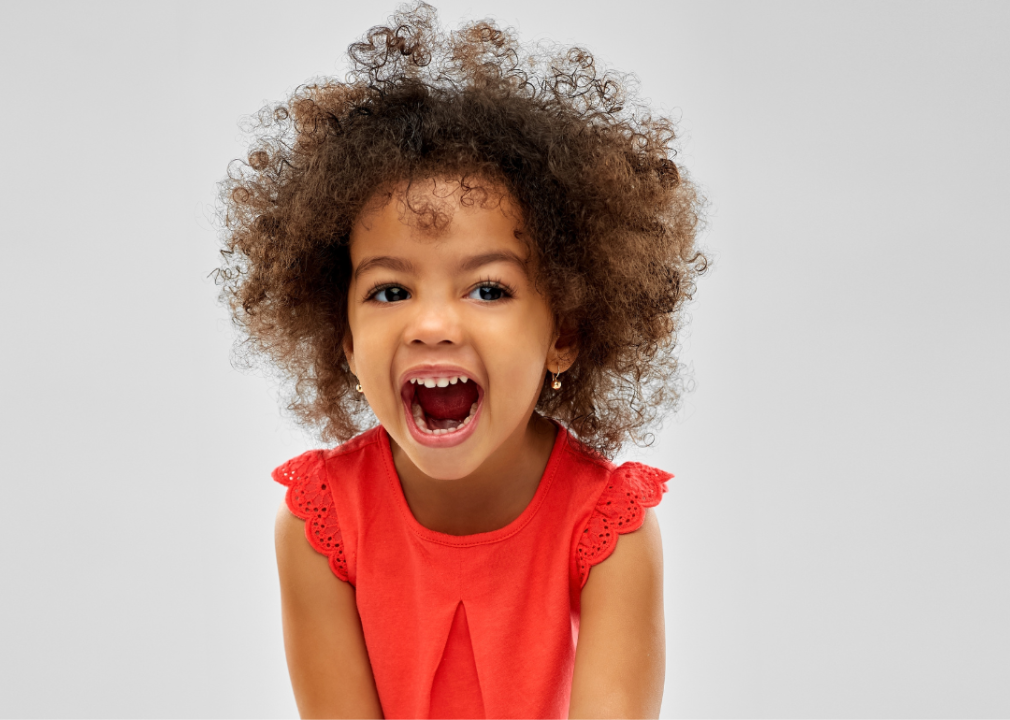
Canva
Unique baby names from the year you were born
Child with curly brown hair and red t-shirt laughing.
Baby name trends are a real, albeit mysterious, phenomenon. Throughout time, certain names rise in popularity and become ubiquitous before falling back into obscurity. Although these ebbs and flows are influenced by some identifiable factors—one of the most obvious being pop culture, with names inspired by celebrities, literary characters, and even politicians—it is difficult to pinpoint all the different circumstances that contribute to naming trends.
Names like Liam, Noah, Emma, and Olivia have topped the Social Security Administration’s list of the most popular names in the U.S. since the early 2000s, but many expectant parents instead seek out more unique options for their little ones. In fact, there is evidence that baby names have become more diverse over the past 100 years, according to a study published in the journal Proceedings: Biological Sciences. At the turn of the 20th century, 91% of babies had names that fell among the 1,000 most popular; however, by the year 2000, that dropped to 86% or fewer babies who were given one of the top 1,000 names.
To honor some of the parents who’ve dared to be different over the years, Stacker looked at names in the SSA’s baby names database from 1950 to 2022, highlighting one of the least common names from each year. Least-used names are defined as those given to only five babies that year, the lowest count included in the database. There are many different names meeting this criteria, so the names included in this list were chosen at random from the available options.
Keep reading to learn more about the origins and meanings of unique names from the year you were born, along with notable figures who have shared some of these rare monikers in the past seven decades.
![]()
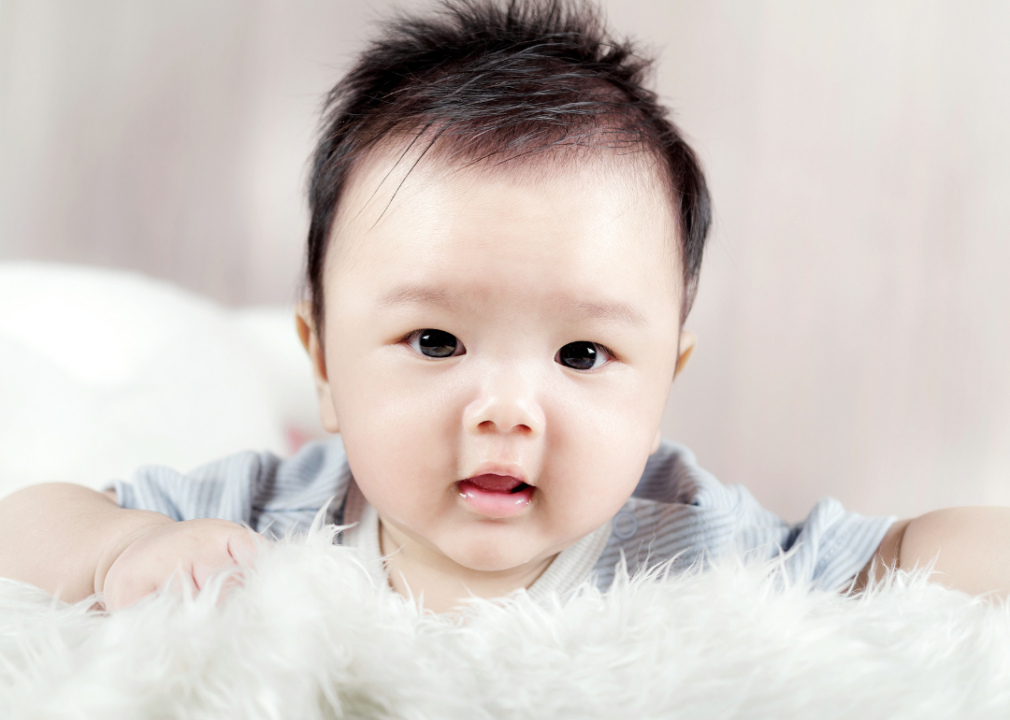
Canva
1950: Feliberto
Asian baby boy lying on the fluffy blanket.
This Spanish take on the German names Philibert and Filbert—more commonly spelled with one letter difference, as Filiberto—is quite rare. It has been given less than 175 times in the U.S. between 1880 and 2021, according to SSA data.
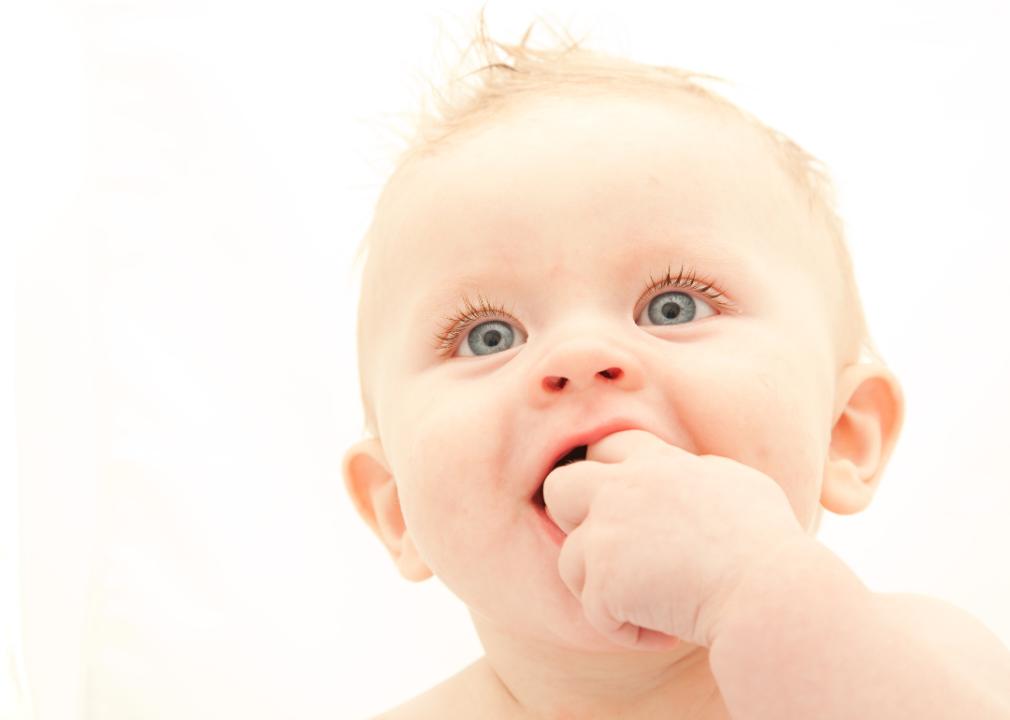
Canva
1951: Doak
A closeup of a baby boy with blond hair and blue eyes.
Though it was one of the least common names of 1951, the few parents who chose the name Doak may have been inspired by Doak Walker, who was widely recognized as one of the nation’s top professional football players in the early 1950s. After leading the NFL in scoring during his rookie season in 1950, he helped the Detroit Lions win back-to-back championships in 1952 and 1953.
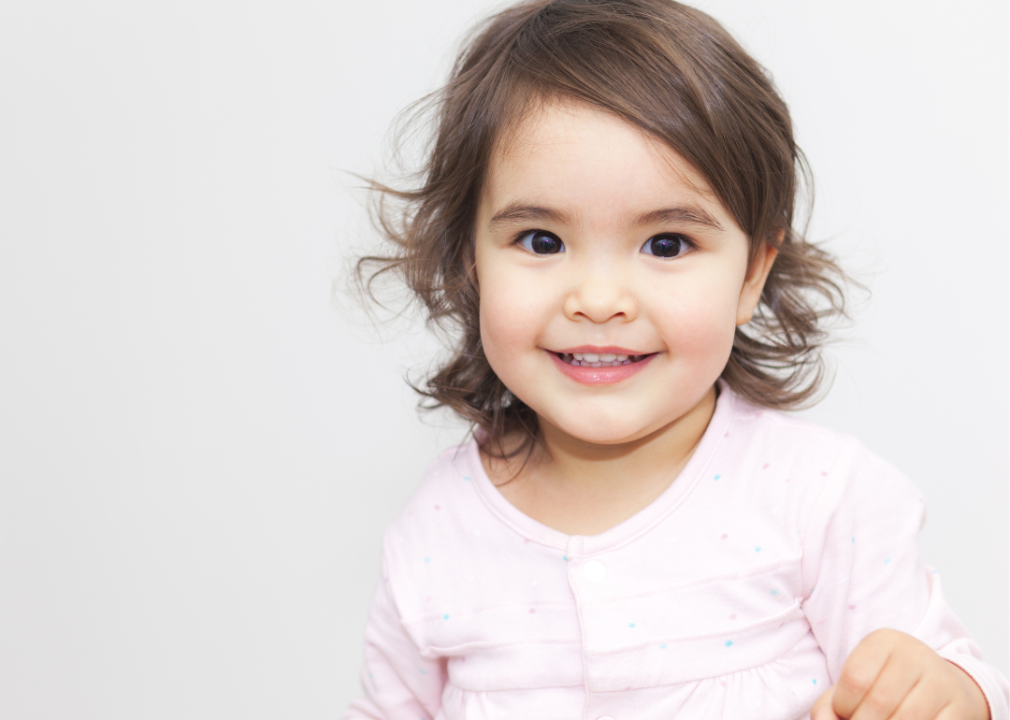
Canva
1952: Charlan
A smiling baby girl with dark brown eyes and hair.
Although rarely used as a first name, Charlan is historically both a French surname, originating from the Poitou region, and an English surname meaning “carrier” or “coachman.” It is also a close derivative of the last name Charland, which could have something to do with this name cropping up in 1952; Canadian ski jumper Jacques Charland won his first national championship and participated in the Winter Olympics that year.
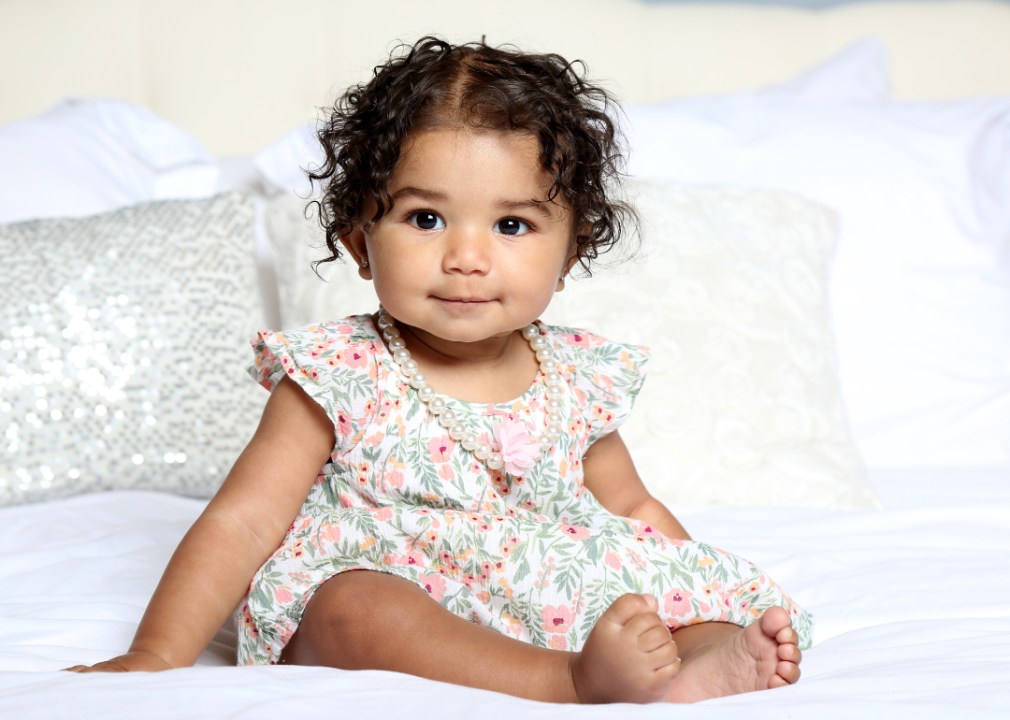
Canva
1953: Genola
Hispanic baby girl with dark, curly hair in a flowery dress wearing pearls.
Genola is a unique Italian name shared with a commune in the Italian Piedmont region, as well as a small town in Utah, although it seems unlikely that either locale had much bearing on this baby name popping up five times in 1953.
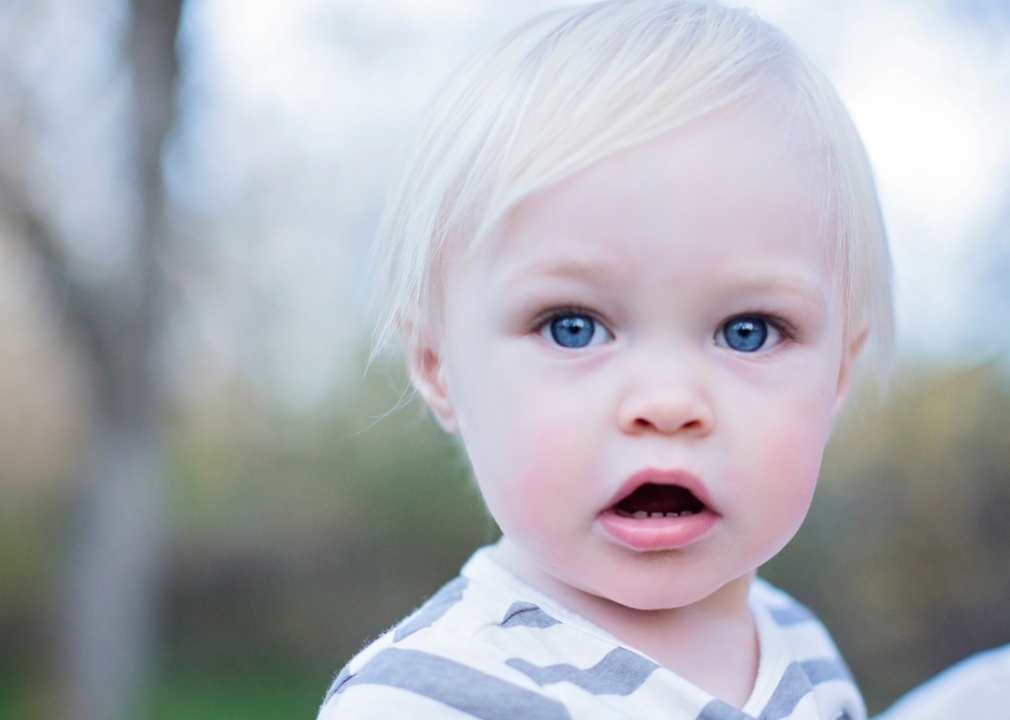
Canva
1954: Thadine
A blue-eyed blond baby boy.
Many of the names featured on this list have an interesting way of evolving from older names passed down over time, and Thadine is no exception. A traditionally French name meaning “the praised” or “courageous heart,” it stems from the Greek name Thaddeus.

Canva
1955: Adelyn
A smiley African American baby girl with curly hair smiling.
A Germanic version of the French name Adeline, Adelyn is based on the Old High German word “adal” meaning “noble.” A number of other variations have been used, including more common names like Madelyn and Adele, the latter of which peaked in 1914 but still remained in the top 500 on the SSA’s list of popular baby names in 1955.
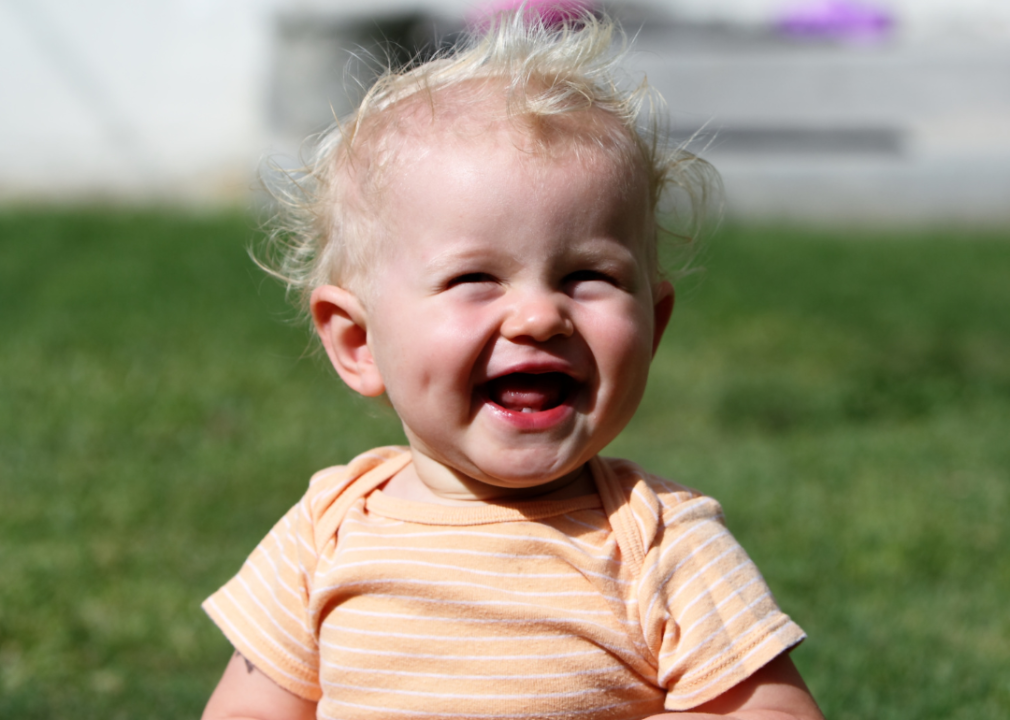
Canva
1956: Ivar
A blond baby boy with a big smile.
Derived from the Old Norse for yew tree, a material once used to forge bows, the name Ivar means “archer” or “bow warrior.” Although uncommon in the 1950s, this Scandinavian name dates back to at least the mid-800s when powerful Viking warrior Ivar Ragnarsson, also known as Ivar the Boneless, reigned terror down upon England.
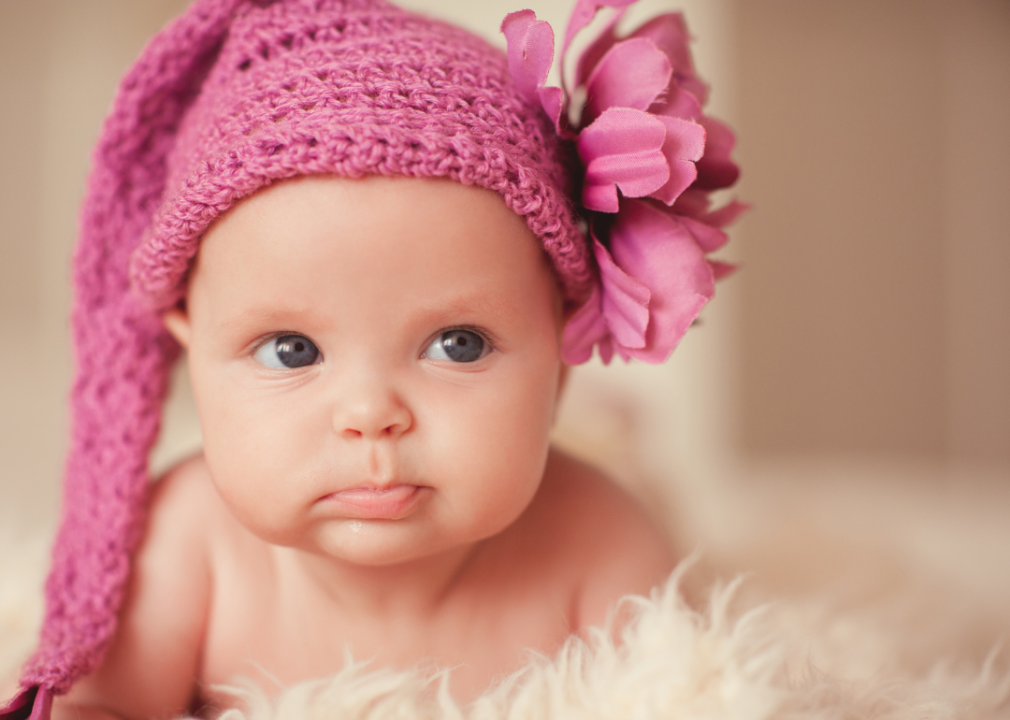
Canva
1957: Cathryne
A baby girl in a pink hat.
Cathryne gives a twist to the more commonplace Catherine, an enduringly popular name that peaked in 1917 at #18 on the SSA list. Coincidentally, acclaimed French actor Catherine Deneuve made her film debut in 1957 and the name saw a resurgence in the decade, where it consistently sat in the top 40.
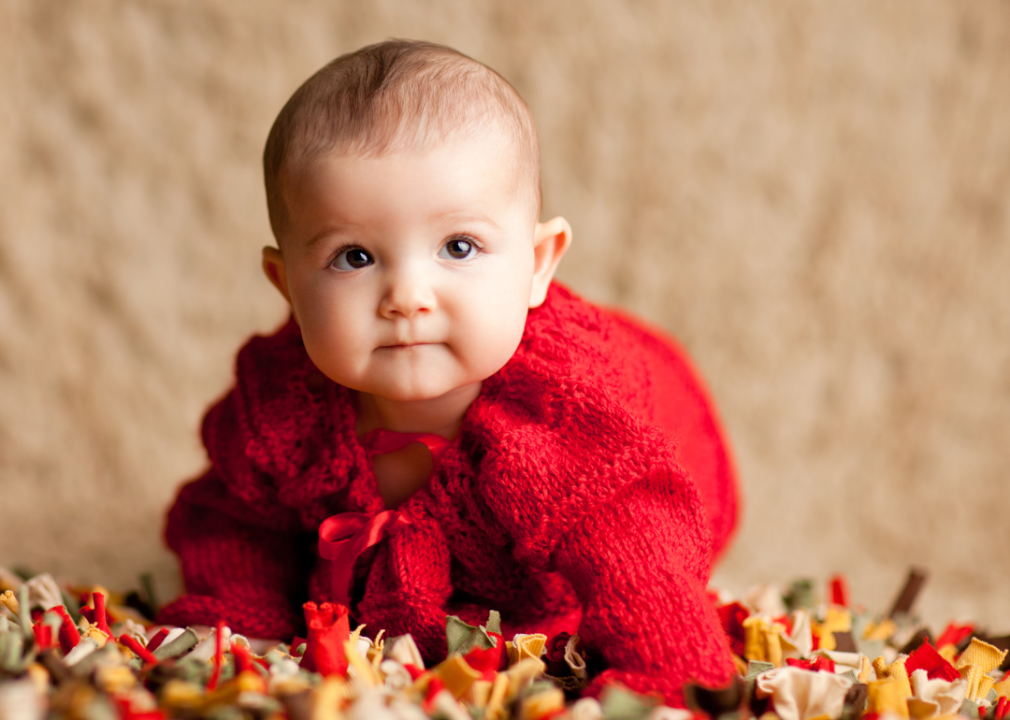
Canva
1958: Kathaline
A baby girl in a red sweater.
As is the case with Cathryne, alternate spellings of common names are a popular trend seen throughout this list, including Kathaline, an Irish name meaning “pure.” The more familiar spelling, Kathleen, remained significantly more popular, though, landing at #21 on the SSA ranking this same year.
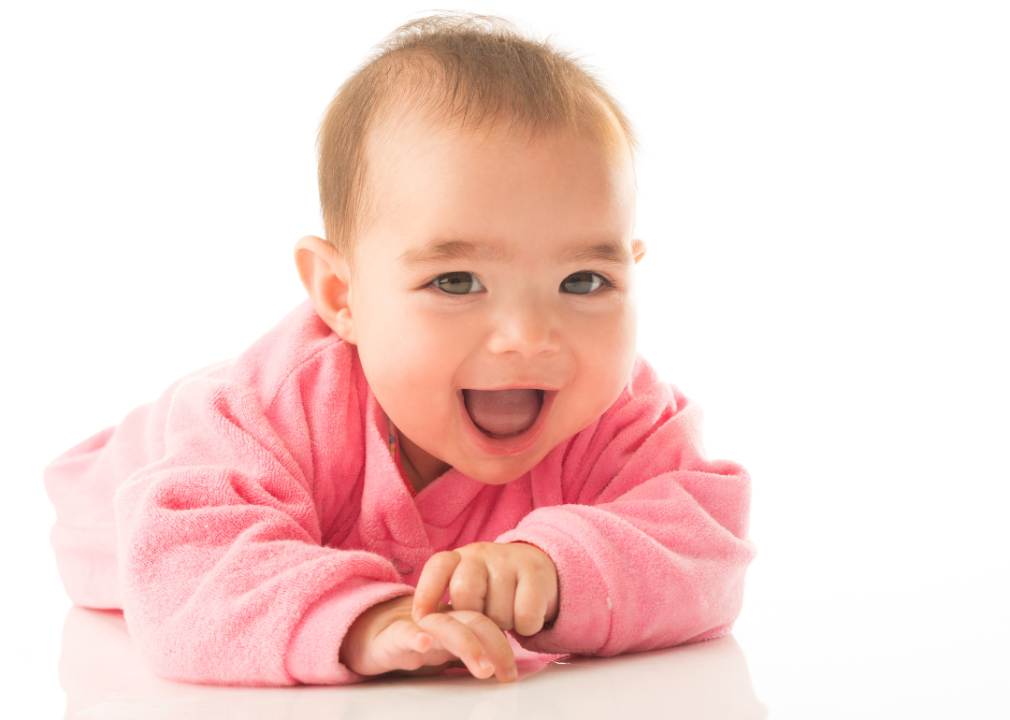
Canva
1959: Andrienne
A smiling baby girl wearing a pink top.
Meaning “manly and virile,” Andrienne is a variation on the Greek name Andrea that was given to just five babies in 1959. One little letter—an extra “n,” in this case—can make a big difference in the popularity of a name; the more common version of Adrienne ranked at #360 on the SSA’s list in 1959.
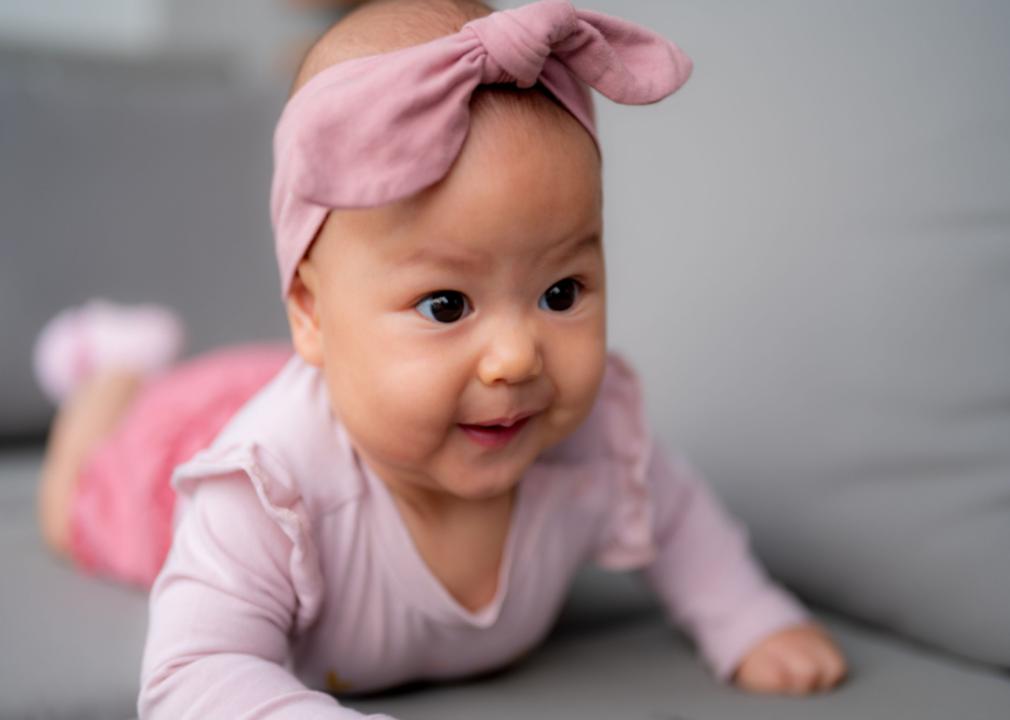
PatiPati // Shutterstock
1960: Rashelle
Asian little girl in pink outfit and bow on her head.
Rashelle is a less commonly used derivative of the more traditional Rachel, a Biblical name found in the Old Testament that means “ewe,” or innocent lamb, in Hebrew. Similar names like Rochelle and Rachelle turned out to be much more commonplace in 1960, both making it into the top 600 that year, then continuing to climb and to peak in 1969 and 1984, respectively.
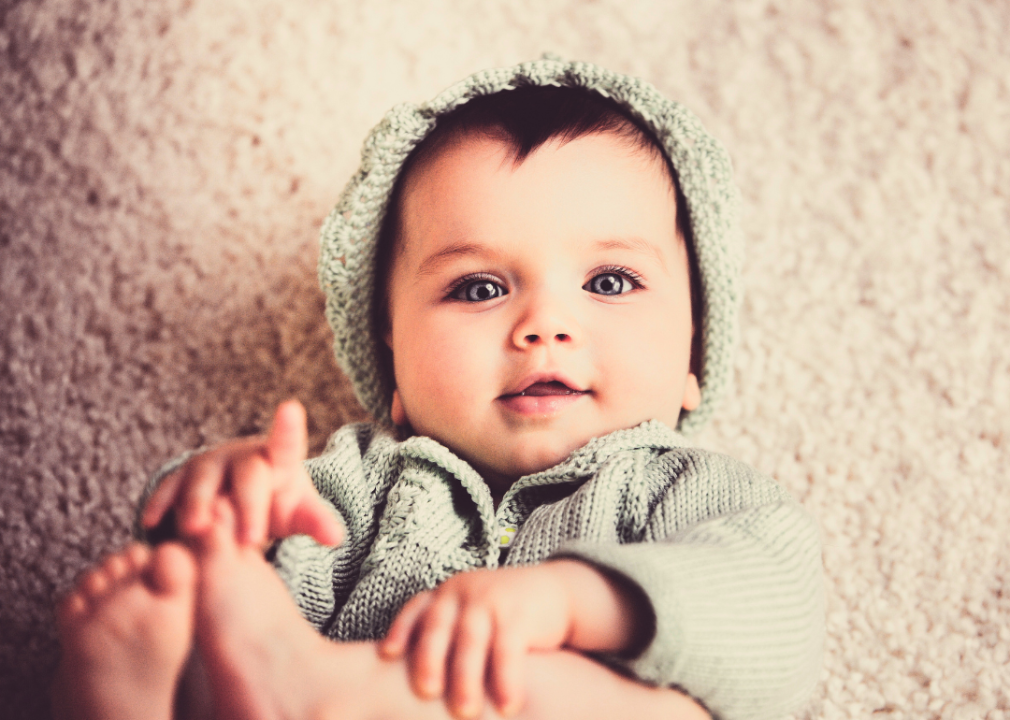
Canva
1961: Ishmeal
A baby boy with blue eyes in green outfit.
This rare name is best known across history with a slightly different spelling: Ishmael was the son of Abraham—a key figure in Christianity, Judaism, and Islam—and it’s also the name of a character in Herman Melville’s 1851 classic novel “Moby Dick,” immortalized with the famous opening line “Call me Ishmael.” Whether parents chose to invert the letters “a” and “e” to create the variation of Ishmeal—or if it was accidental—remains unclear, but the name has never made it to the top 1,000 of the SSA ranking.
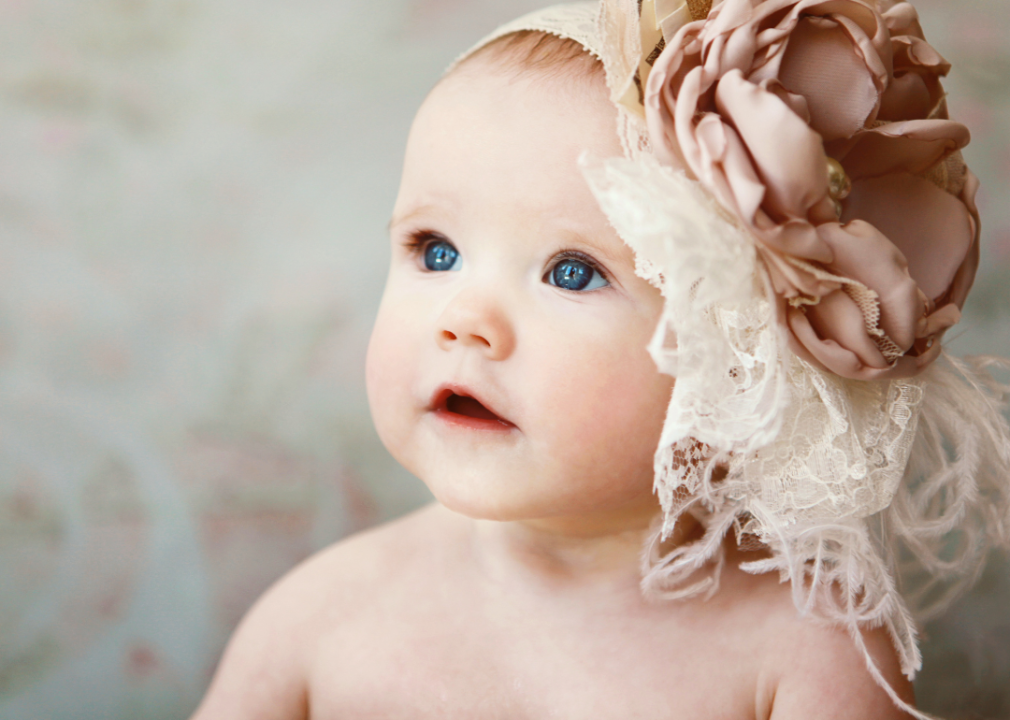
Canva
1962: Mollye
A baby girl with a rose band on her head.
Molly and Mollie are frequent spellings of this classic name, but adding an “e” to the end of the former is a less common choice, used just five times in 1962. Perhaps these variations were inspired by Jerry Lee Lewis’ popular cover of the Little Richard song “Good Golly, Miss Molly,” released that same year.
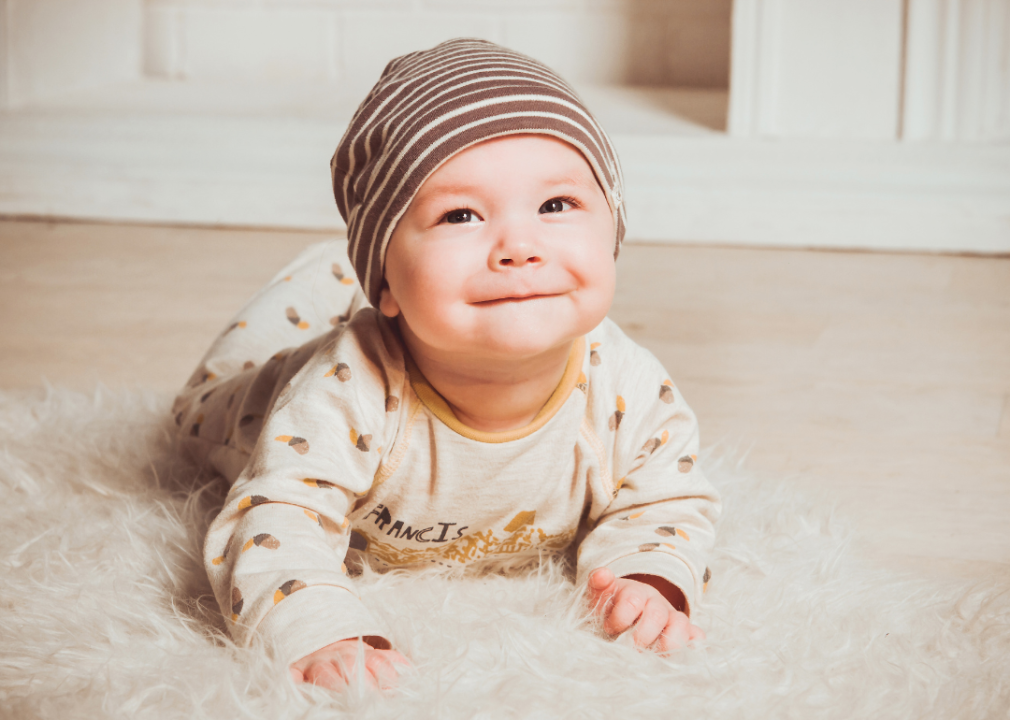
Canva
1963: Legrand
A baby boy in a hat crawling.
Rumored to have first been a nickname, this traditional French surname meaning “large” or “tall” originated in the Burgundy region of France. Perhaps the parents who named their babies Legrand in 1963 were foreshadowing their great stature in the years to come.
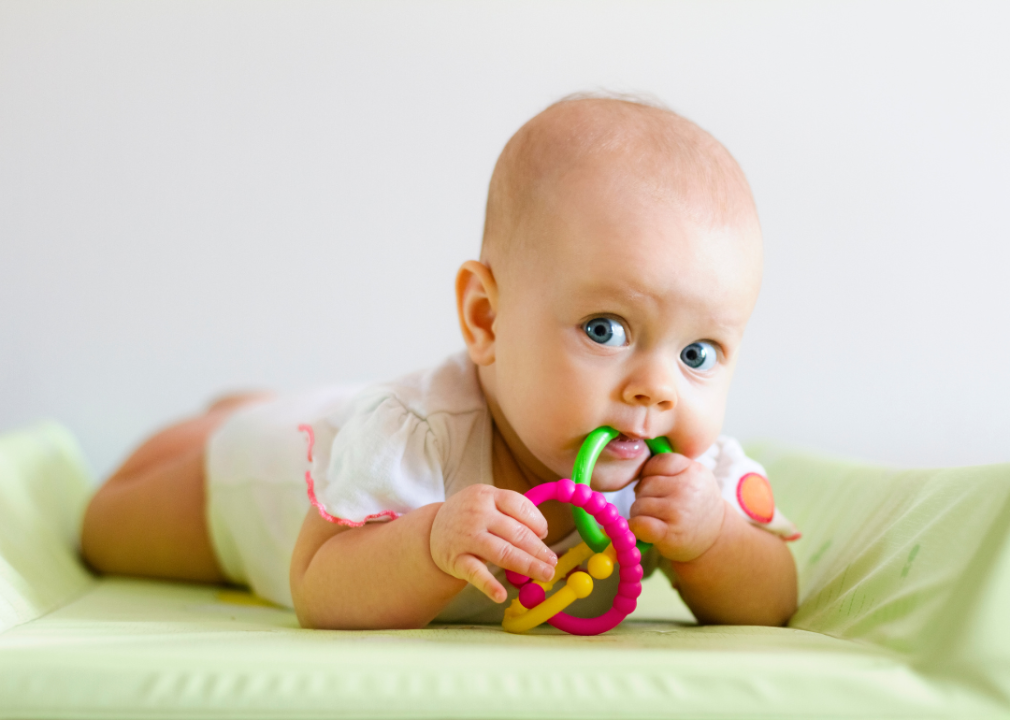
Canva
1964: Royetta
A baby girl with teething ring.
As one might expect based on how similar it is to the word “royal,” Royetta is a name of Latin origin meaning “little sovereign.” In terms of popularity, the name peaked a decade earlier in 1953, when a dozen children were given the name, but was still the choice of a handful of parents in 1964.
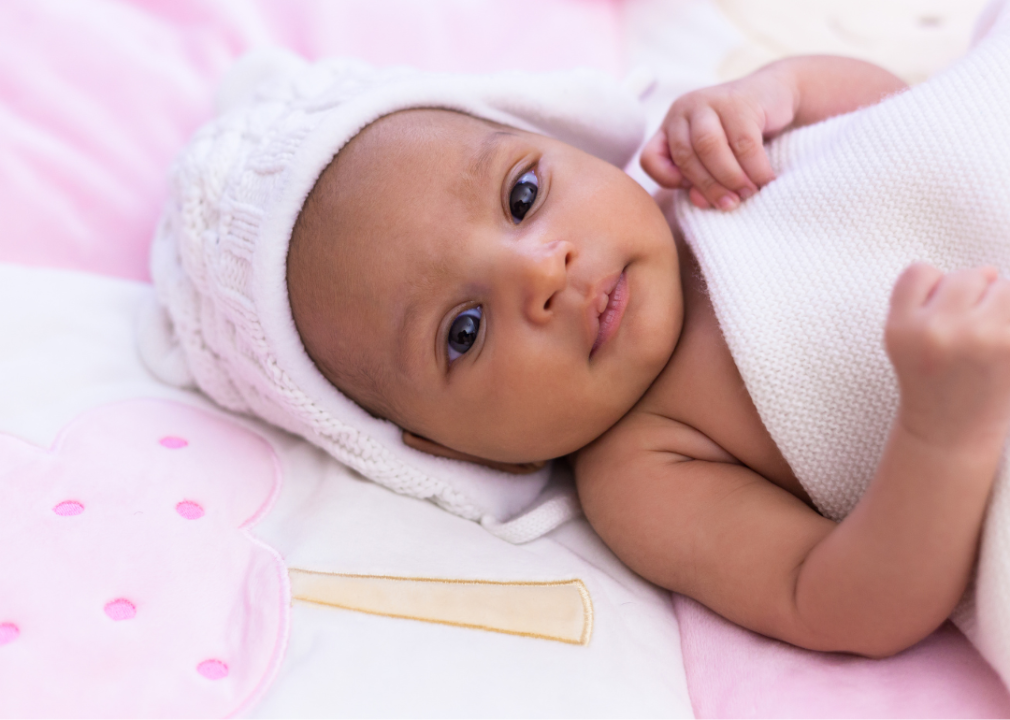
Canva
1965: Almira
African baby girl lying under a blanket.
The name Almira peaked in popularity in 1902, so parents who chose this name in the ’60s may have had a thing for the old-fashioned—or perhaps they were fans of Almira Sessions, an actor and one of the few Americans with this uncommon name. Sessions appeared onscreen in hundreds of projects throughout her career, including minor roles on popular TV series like “The Munsters” and “The Andy Griffith Show” throughout the ’60s.
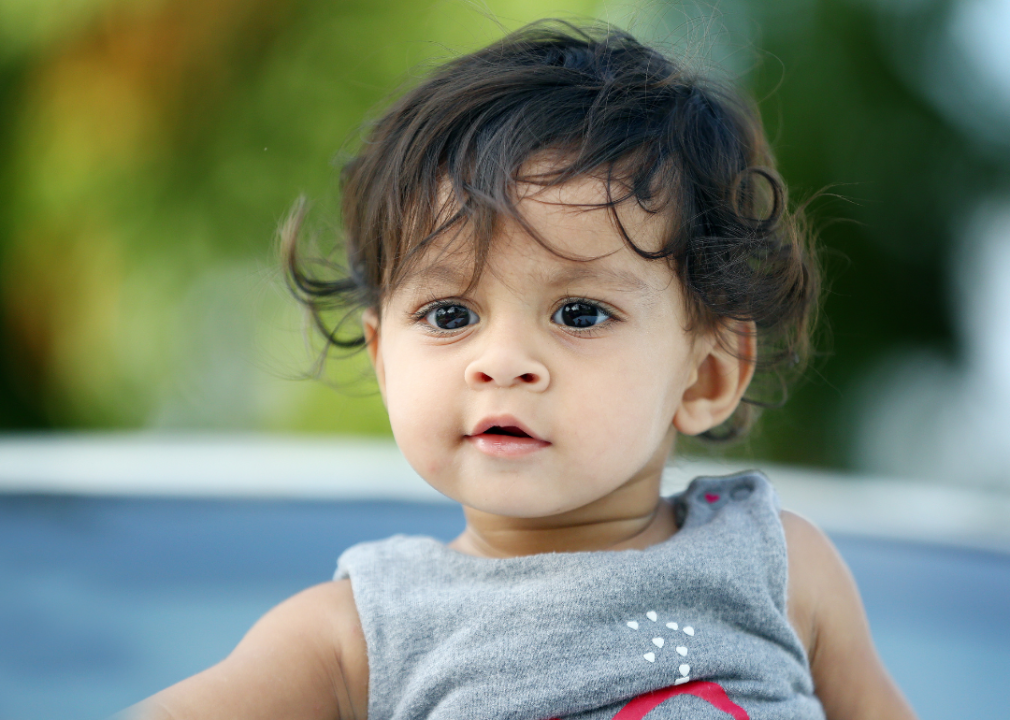
Canva
1966: Henrique
Indian Asian baby boy with curly hair.
The name Henrique was given to only five babies in the U.S. in 1966, but it’s shared by a Brazilian soccer star born that same year: Henrique Arlindo Etges, who played professionally in the ’80s and ’90s.
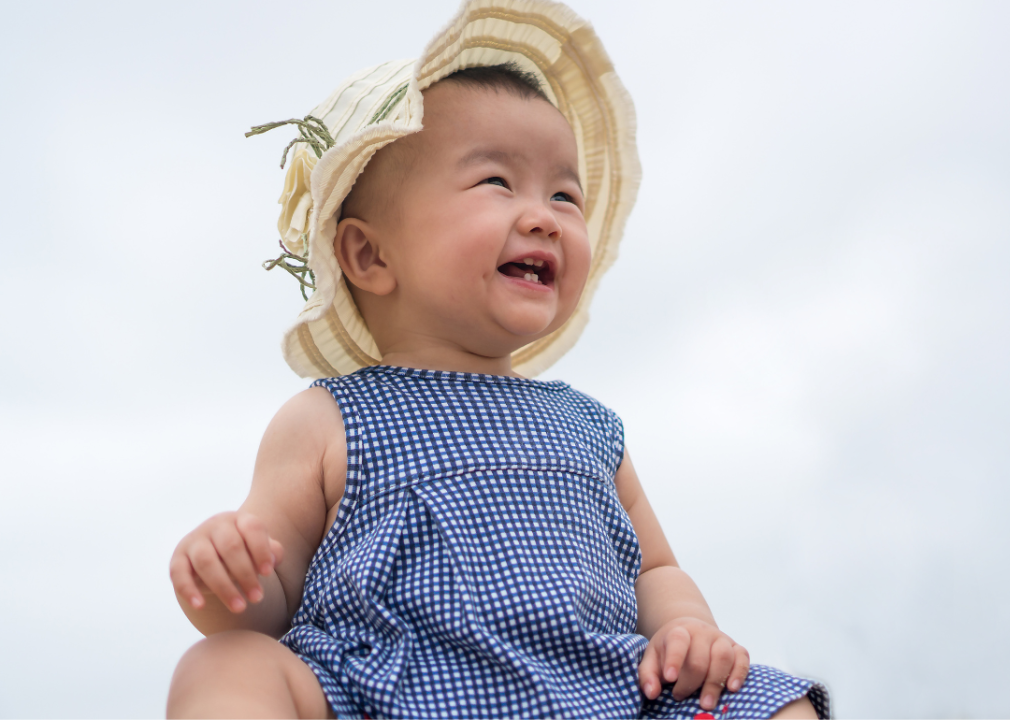
Canva
1967: Donnella
Asian baby girl smiling in summer dress and hat.
Like Donna, the name Donnella stems from the Italian meaning “lady,” but it didn’t catch on quite as well. Donna peaked at #5 on the SSA’s list in 1960 but was still in the top 20 in 1967—a far cry from the five babies who were named Donnella that same year.
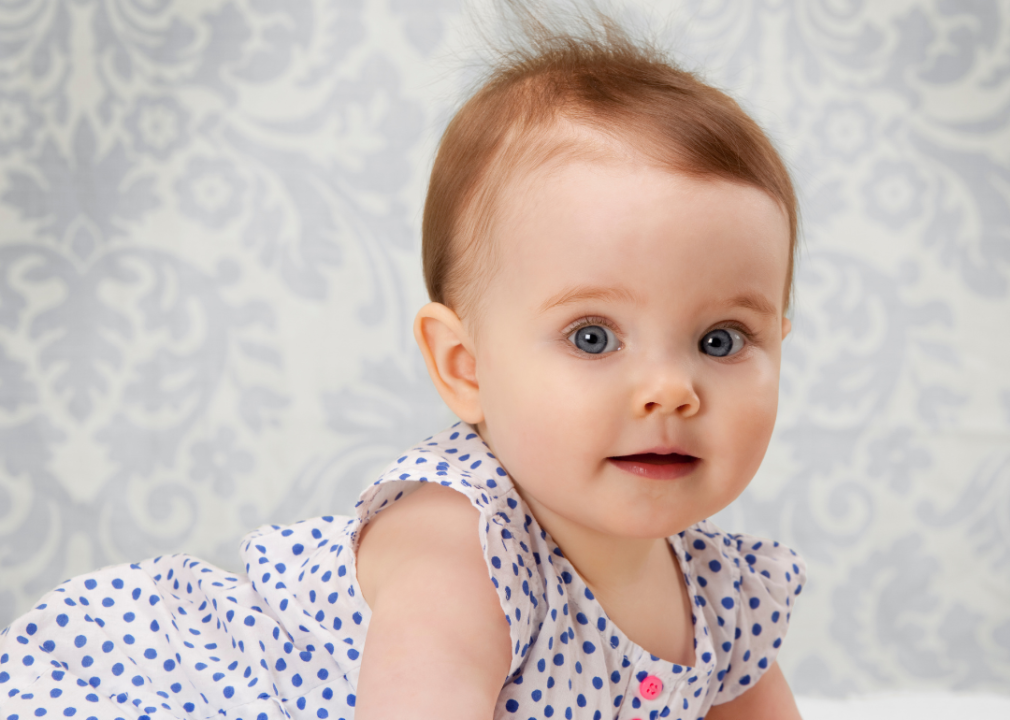
Canva
1968: Bethena
A red haired baby girl in a dress.
Although ragtime pianist Scott Joplin—best known for his catchy tune “The Entertainer”—died in 1917, his music didn’t become widely popular until a resurgence of this jazz style during the 1970s. It’s possible one of his works—a 1905 waltz titled “Bethena”—inspired some early fans to use the name for their newborns in 1968.
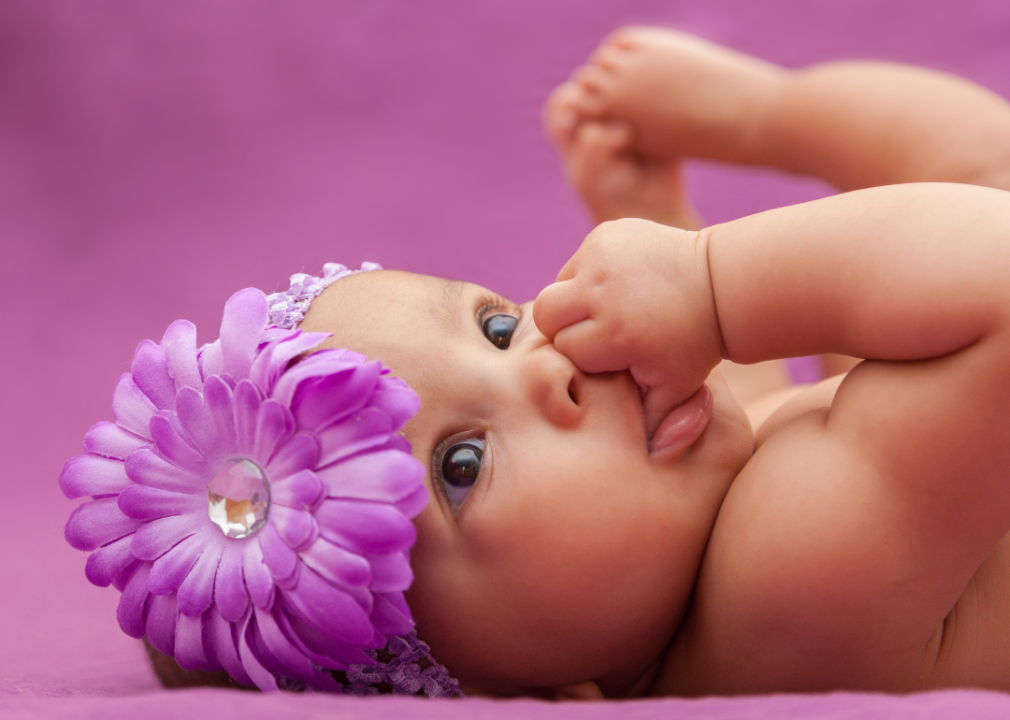
Canva
1969: Dera
African American baby girl with a big purple flower on her head sucking her thumb.
Some names are used across many different cultures and therefore have many different meanings. Such is the case with Dera, whose origins include the Nigerian meaning “destiny,” the Polish meaning a “thick cover” like a blanket, and the Welsh meaning “fiend.” Whatever the inspiration, just five babies were given the name in the final year of the ’60s.
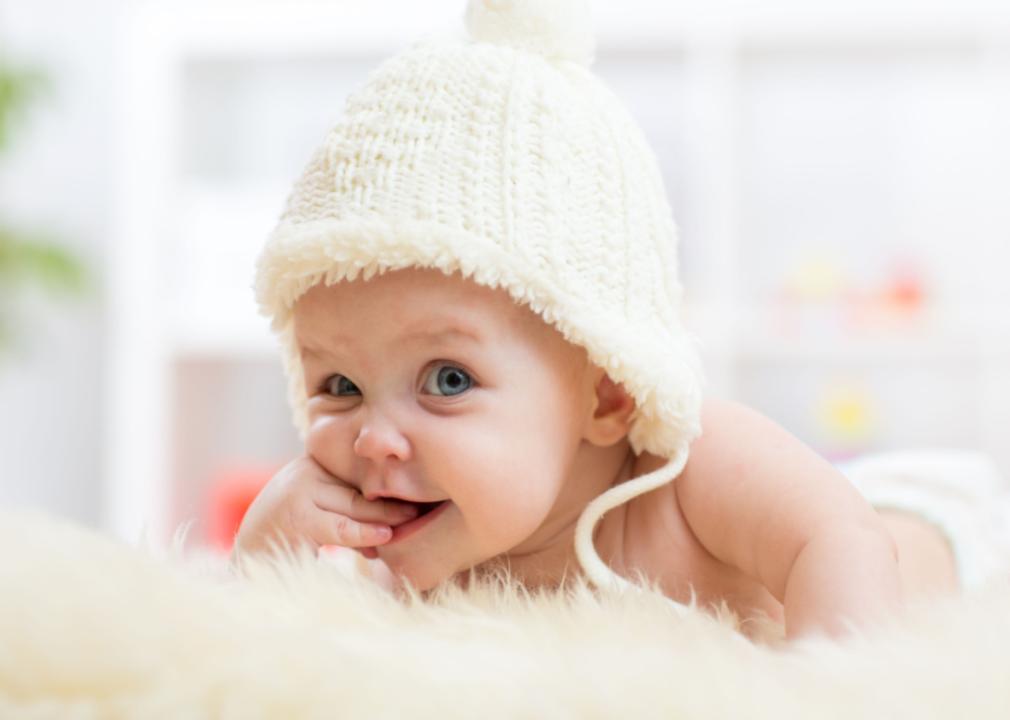
Oksana Kuzmina // Shutetrstock
1970: Jayce
A baby girl looking into the camera wearing a white hat.
Jayce is a name of Greek origin, stemming from the ancient goddess of healing, Iaso. Adding a “y” to the more common spelling Jace—which originates from Hebrew and also means “healer”—lends the name a more versatile, gender-neutral feel. Parents who chose Jayce in 1970 were ahead of their time; using gender-neutral names was a trend that started to take off in the late 1970s. Jayce peaked in popularity in 2015 but has been sitting in the top 150 since 2010.
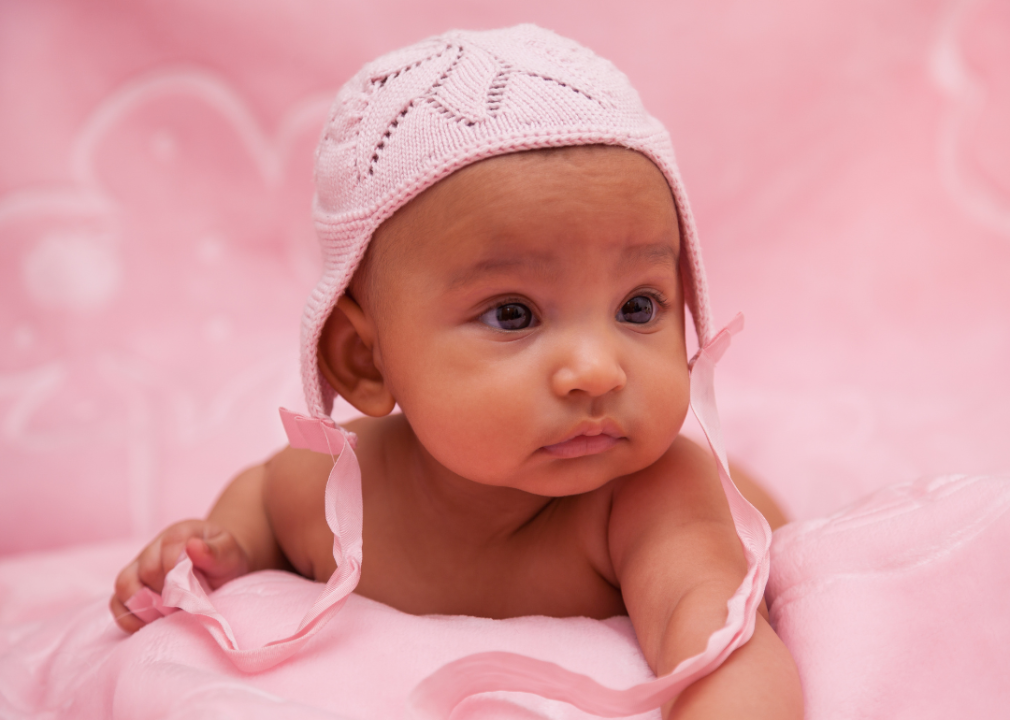
Canva
1971: Shirleyann
African American baby girl in pink hat.
With the name Shirley peaking at #2 on the SSA’s list in 1936, it’s not surprising to see derivatives like Shirleyann pop up in subsequent decades. Shirley Ann, a variation separating the two names, was more frequently seen in the early ’70s, however; Pulitzer Prize-winning author Shirley Ann Grau’s “The Condor Passes” published in 1971 and Shirley Ann Jackson became one of the first Black women to receive a doctorate two years later.
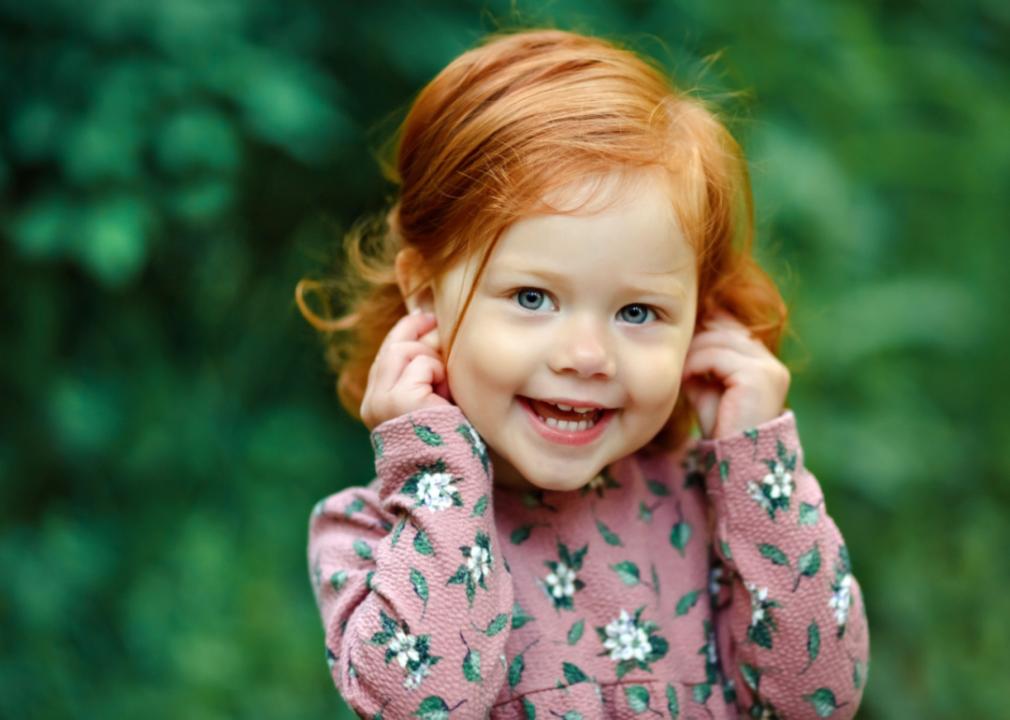
Coy_Creek // Shutterstock
1972: Nema
Red-haired little girl smiling happily.
As a surname, Nema evolved from the Irish family name MacConmara, meaning “warrior of the sea.” However, as a given name, it shares the base “Nem” with a variety of Hindu, Indian, and Sanskrit names like Nemachandra and Nemali. A more common variation doubles the “e” to make Neema, a gender-neutral Swahili name that means “born during a prosperous time.”

Canva
1973: Kish
Asian baby boy eating a cookie.
The name Kish echoes more of the ancient world than of GenX babies, making it an interesting choice for parents in the early ’70s. Kish was a key city in northern Mesopotamia, the name of Saul’s father in the Bible, and is an English name meaning “leather worker,” like those who created leather armor for knights.

Canva
1974: Jeness
A closeup of a baby girl with blue eyes and colorful hat.
Drop the “a” from the end of Jenessa, the Hebrew name meaning “God is gracious,” and you get this rare name that was given to just five babies born in 1974. Perhaps more often heard as a last name, Jeness is said to originate from the French province of Anjou, where it began as the name of a poultry farmer.
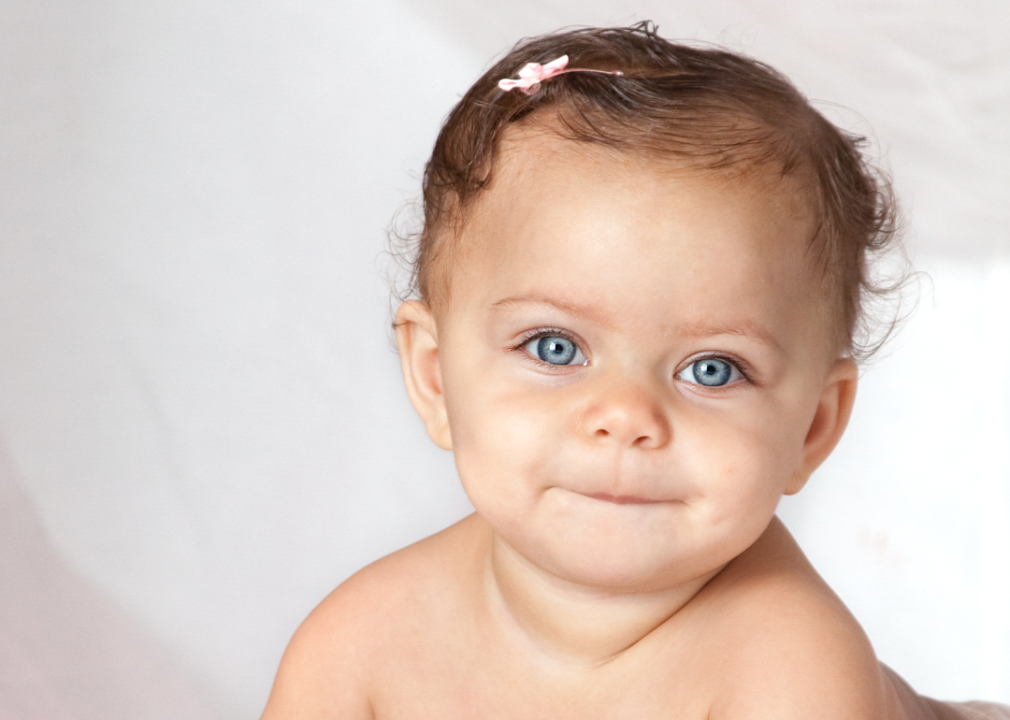
Canva
1975: Wyndy
A blue eyed baby girl.
The name Wendy—a moniker made fashionable by author J.M. Barrie’s Peter Pan stories in the early 1900s—peaked at #28 on the SSA list in 1970. The original version likely influenced this alternative spelling with a Scottish flair that popped up a few years later.

Canva
1976: Rahkeem
A smiling boy standing.
While Rahkeem may be a bit obscure, the name has many variations—Raheem, for instance, is the English version of the Arabic name Rahim, one of Allah’s 99 names in the religion of Islam. One notable person who was given a name in this family in 1976 was professional football coach Raheem Morris, who’s best known for leading the Tampa Bay Buccaneers from 2009 to 2011 and who currently serves as defensive coordinator for the Los Angeles Rams.
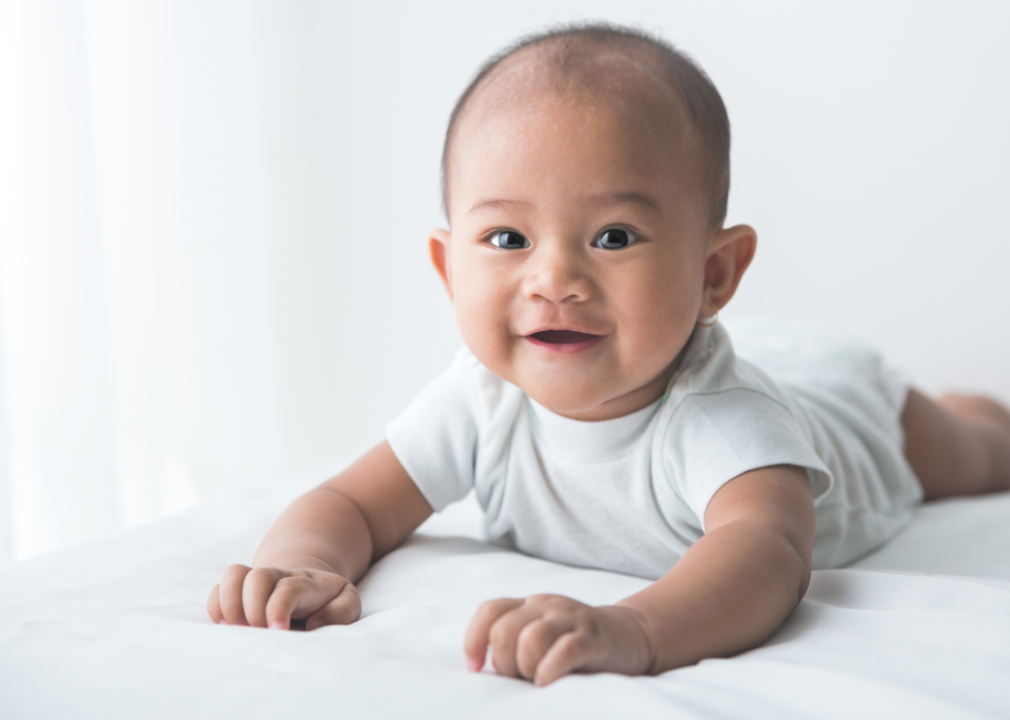
Canva
1977: Lem
A smiling Asian baby boy.
More than one American pop culture event in the mid-’70s may have sparked a few trendy parents’ interest in the unique name Lem. In 1977, the California rock band Lem launched their album “Machines” and Polish sci-fi writer Stanislaw Lem’s short story collection “The Star Diaries” was first published in English in 1976.
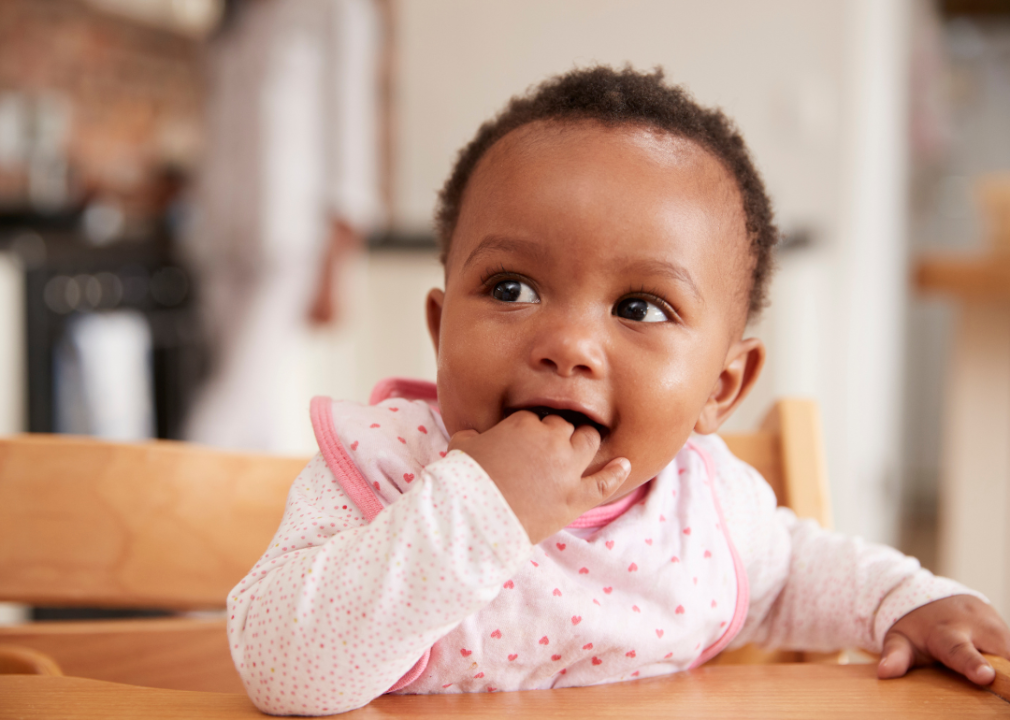
Canva
1978: Keyonia
African American baby girl sitting in a baby chair with her hand in her mouth.
This derivative draws on the rich tradition of Hawaiian names like Kiana, meaning “divine,” and Keoni, meaning “God is gracious.” It’s also the name of prominent 19th-century Hawaiian politician Keoni Ana.
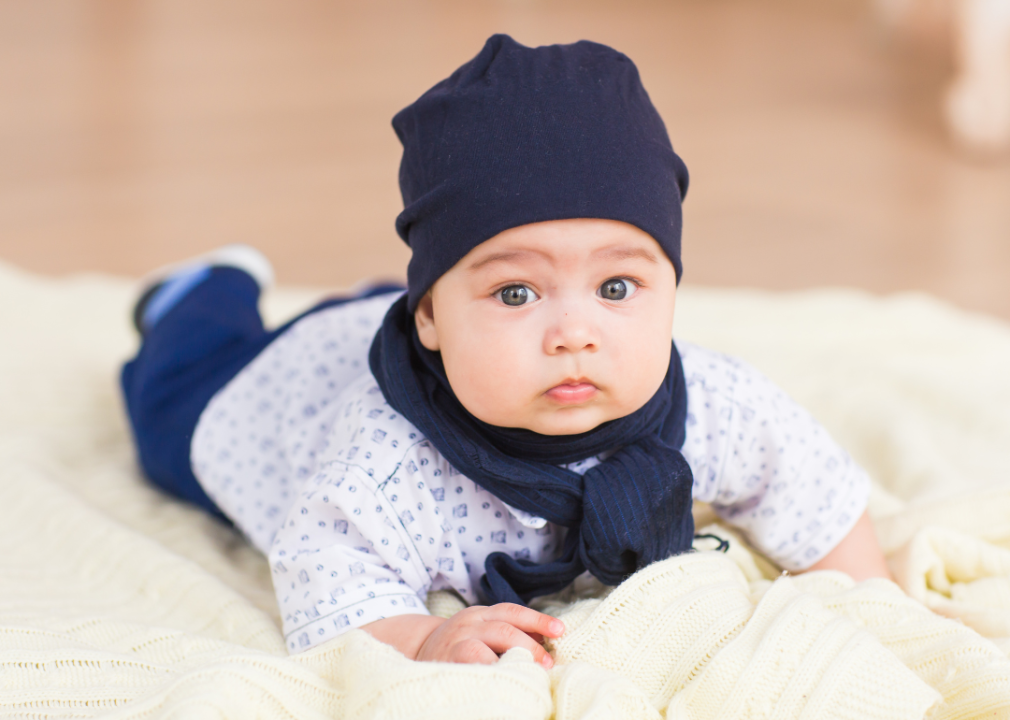
Canva
1979: Dyson
A baby boy with blue eyes and blue hat.
A few science enthusiasts may have been so taken with theoretical physicist Freeman Dyson’s groundbreaking 1979 paper “Time Without End”—proposing a theory of eternal life via advanced consciousness embedding itself in indestructible matter—that they borrowed his surname for their newborn children. Coincidentally, James Dyson also came up with the idea for his famous bagless vacuums the same year.
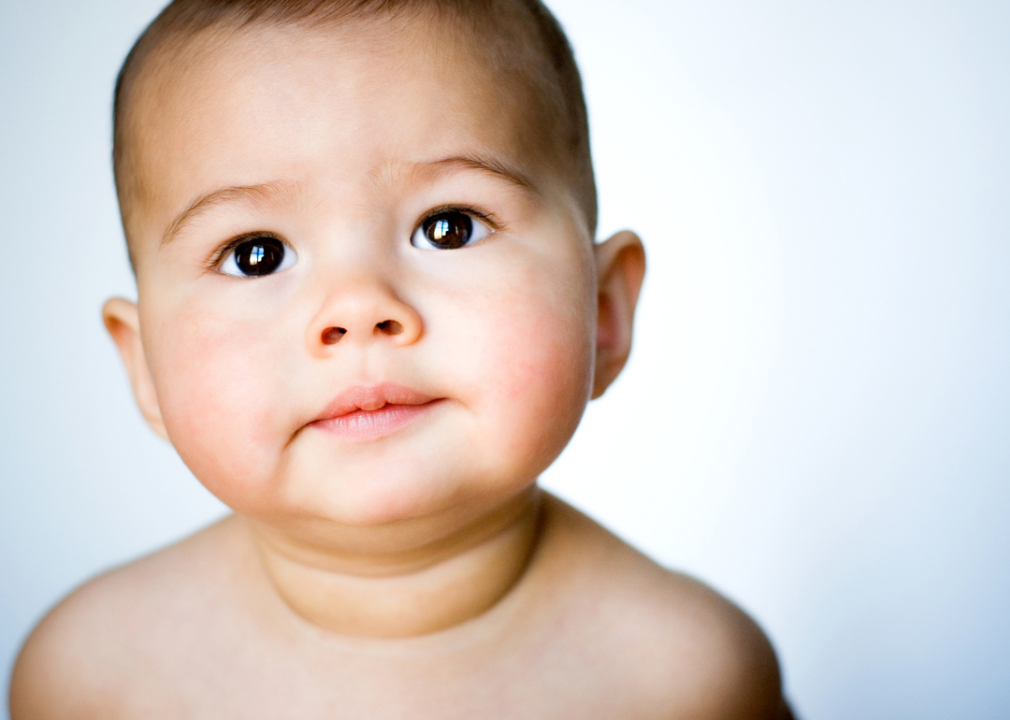
Canva
1980: Harvest
A baby girl with large brown eyes.
With names like Jennifer, Jessica, Michael, and Christopher topping the SSA’s list in 1980, a few parents decided to get a bit more creative with interesting choices. Though not nearly as popular as Autumn—which came in at #180 in 1980—the also fall-inspired name Harvest was the choice for five babies born that year.
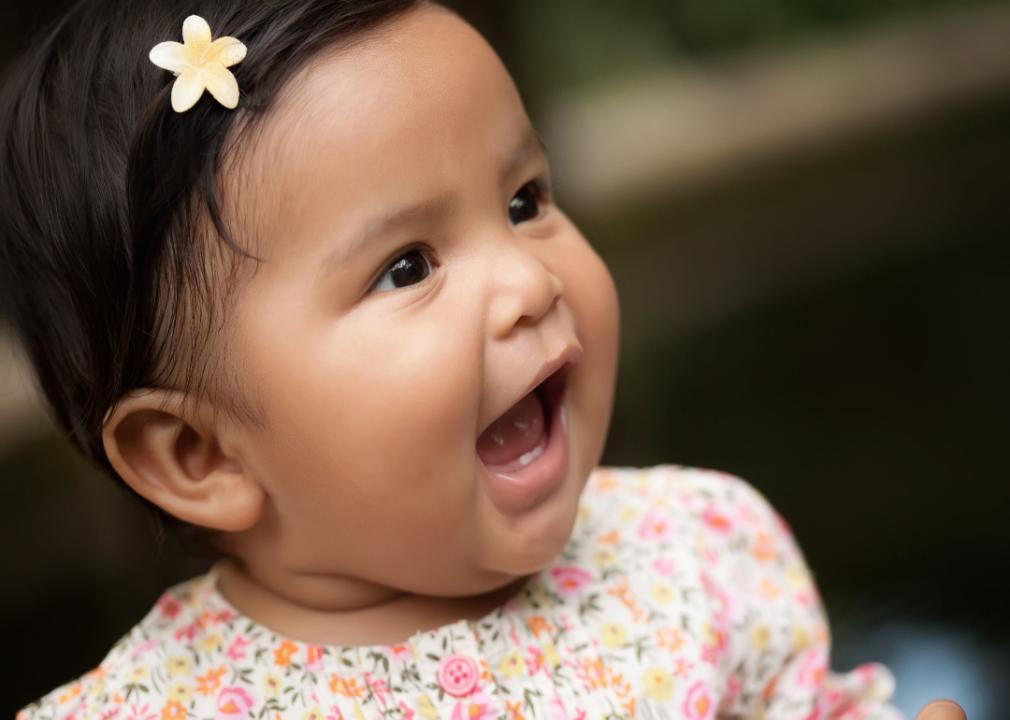
Marlon Lopez MMG1 Design // Shutterstock
1981: Davonne
A closeup of a Hispanic baby girl smiling.
There are multiple possible influences for the name Davonne. It varies by just one letter from Devonne, which is a derivative of the Old English Devon; and it could also be considered a variation on the French name Yvonne, which landed much higher on the 1981 SSA list at #233.
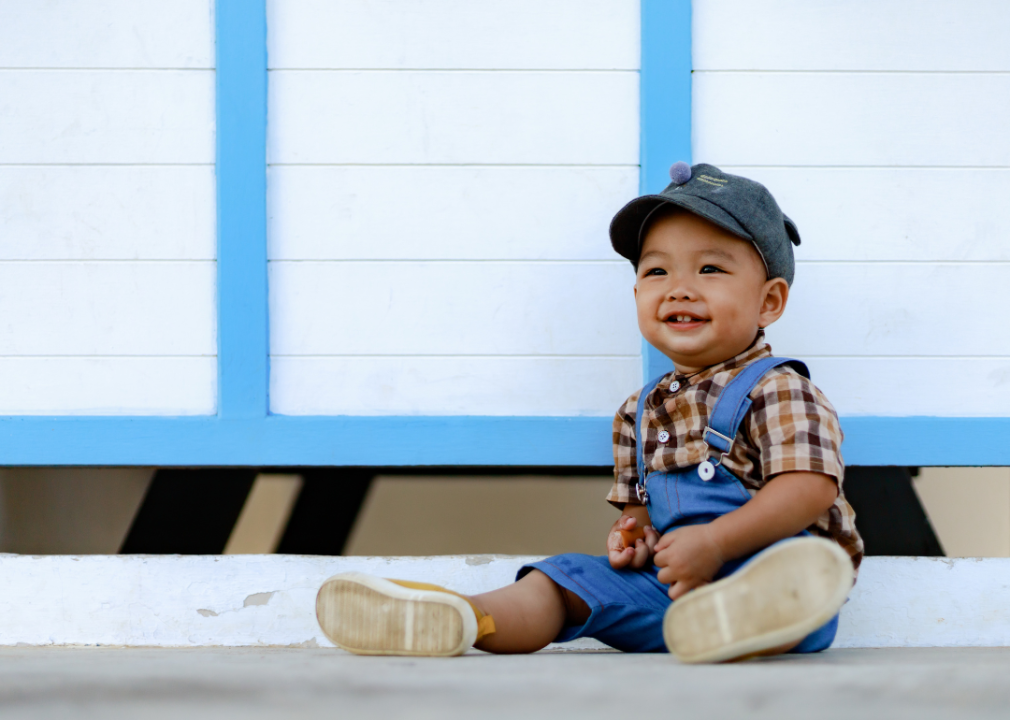
Canva
1982: Chen
Asian boy sitting on the ground.
Although it is one of the five most common surnames in China, Chen—a gender-neutral name meaning “dawn” or “morning”—is a rare first name in the U.S., given to just five babies in 1982.
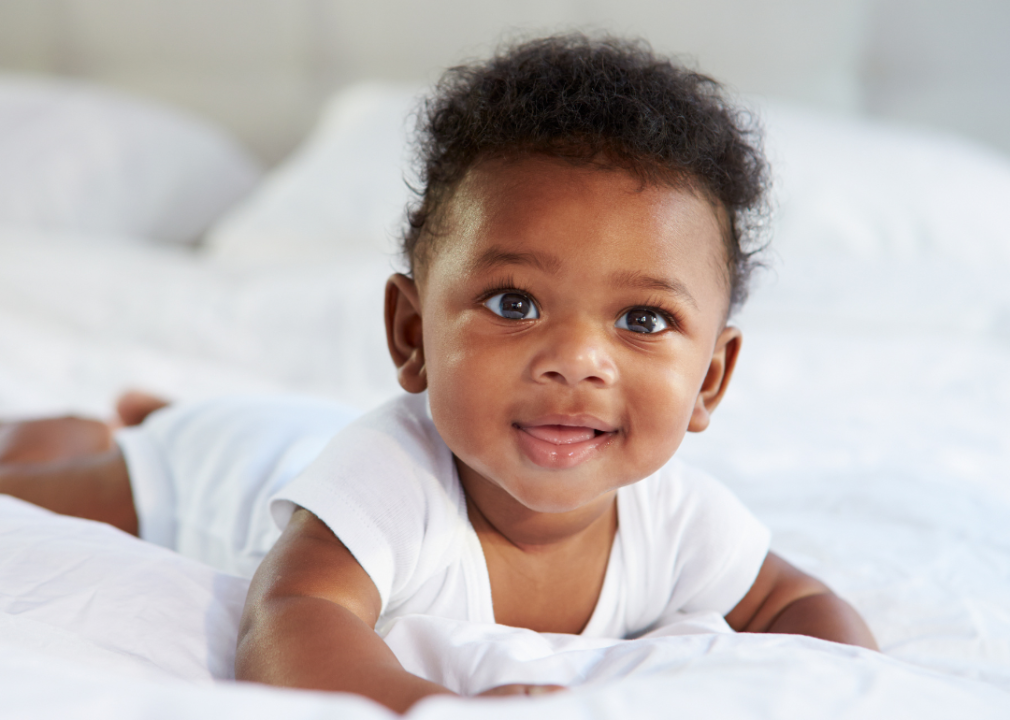
Canva
1983: Kent
African American baby boy lying on bed.
The third installment of the Superman franchise hit the big screen in 1983, starring Christopher Reeve in the title role. It seems a few comic buffs might have borrowed the surname of their favorite superhero’s alter ego—Clark Kent—for their own newborns that year.
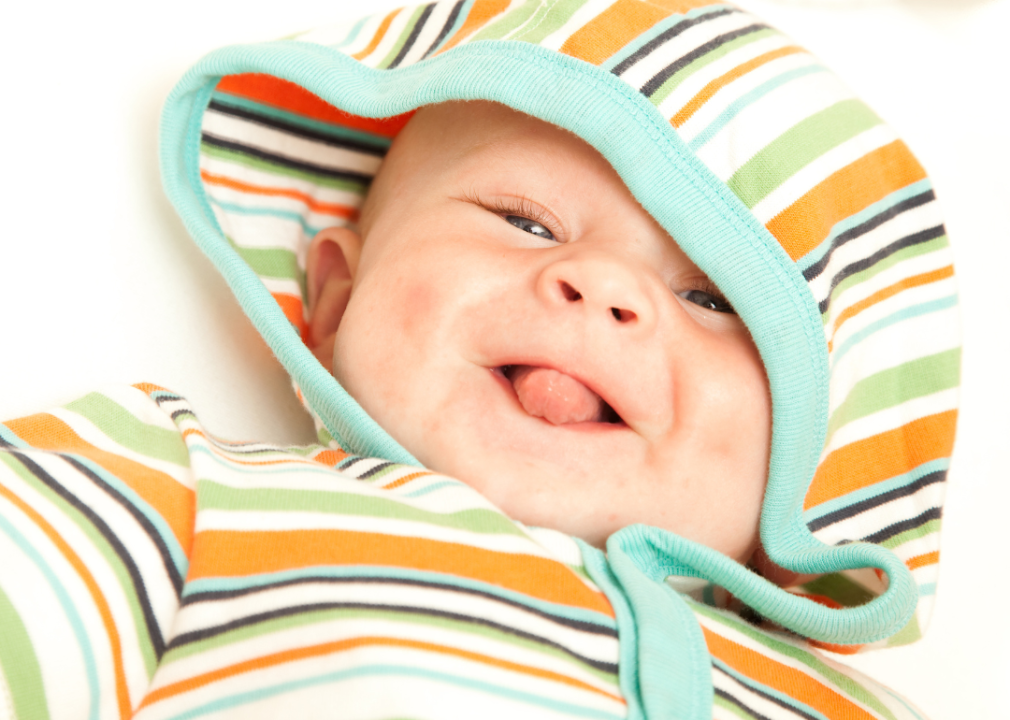
Canva
1984: Gwyn
A baby boy with wearing a colorful hood smiling.
Up-and-coming Hall of Famer Tony Gwynn’s banner season with the San Diego Padres may have inspired some baseball enthusiasts to use his last name for their new bundles of joy, albeit minus an “n.” The year 1984 kicked off the first of five seasons when Gwynn recorded an astounding 200 hits, taking his team all the way to the World Series.
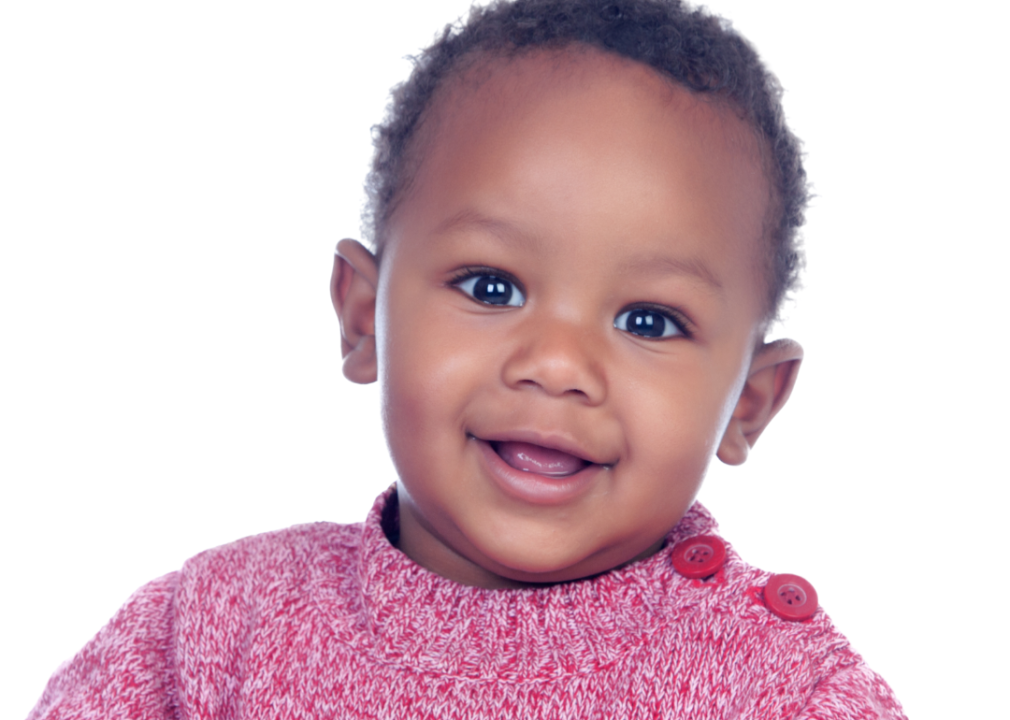
Canva
1985: Jalon
An African American in red sweater.
With Greek and Hebrew roots, the name Jalon spawned the American name Jalen, both of which share the same meaning: “calm.” Jalen has proven to be far more widely used in the U.S., however, peaking in 2000 when it nearly broke into the top 100 on the SSA’s list. Jalon peaked in popularity in 2001, reaching #874 on the list.
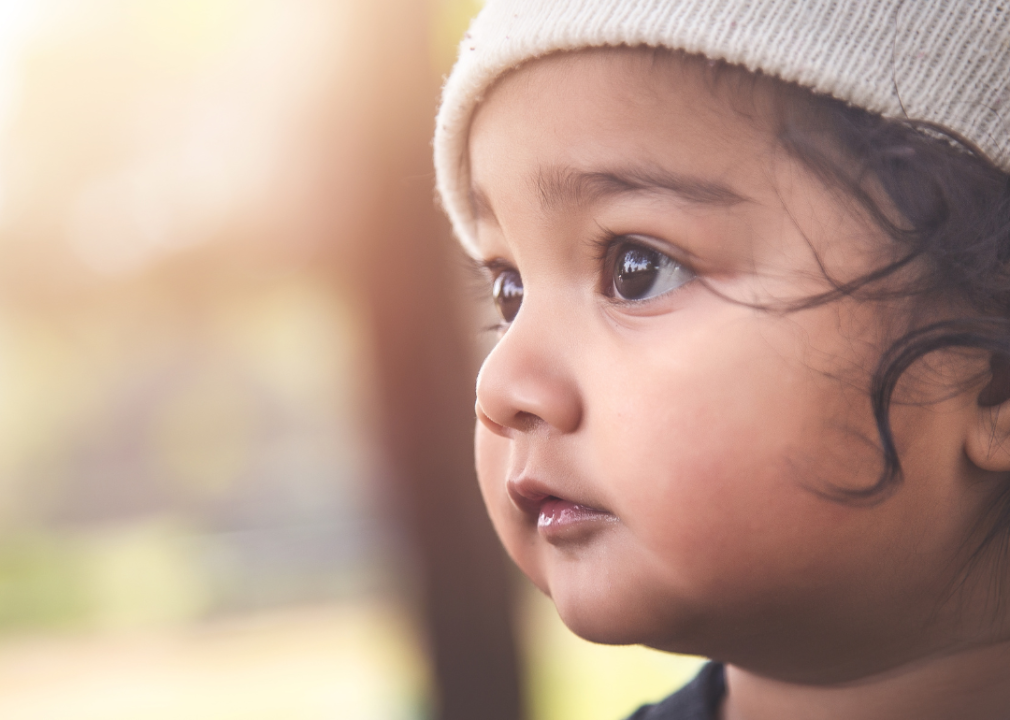
Canva
1986: Karene
A closeup of an Asian / Indian boy wearing a hat.
The name Karene—a derivative of the French-Greek name Corinne, as well as the Scandinavian name Karina—means “maiden.” Although it looks very similar to the common name Karen, it’s nowhere near as popular: Karen was the 100th most popular baby name on the SSA’s 1986 list, and Karene has never cracked the top 1,000.
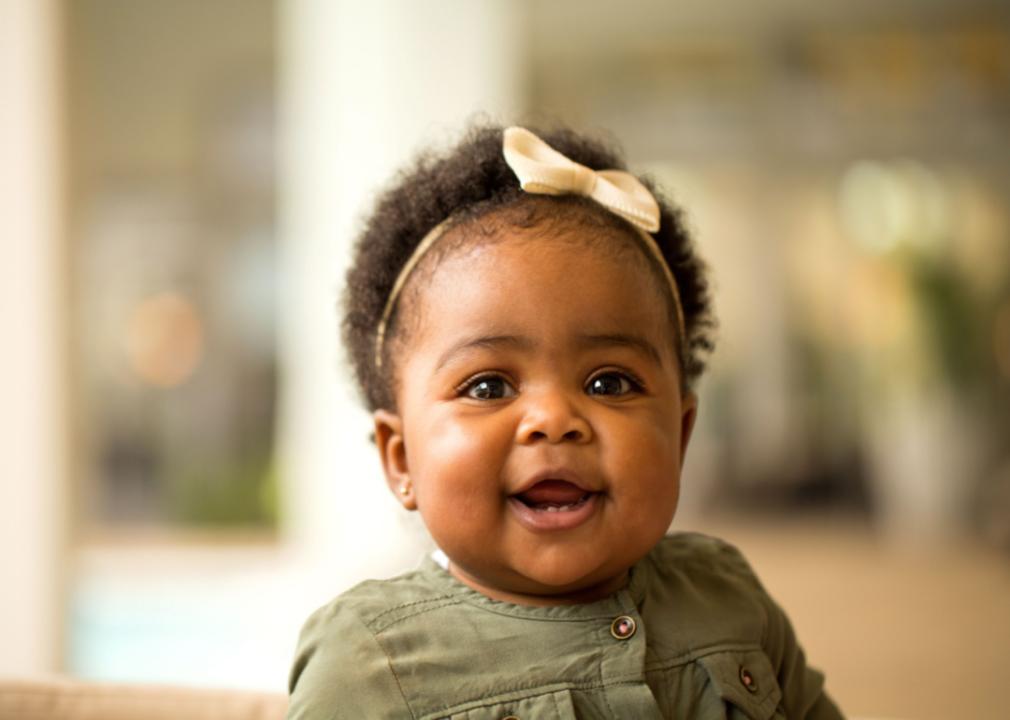
pixelheadphoto digitalskillet // Shutterstock
1987: Dashonda
African American baby girl in green dress sitting and smiling.
Sometimes new baby names can be created by simply adding a few letters or a new syllable to an existing, more common name. In this case, adding “Da” in front of the more familiar Shonda—which originated from the Old French name Chantal—generated a name so distinctive it has only been recorded 126 times in the U.S. between 1880 and 2021.
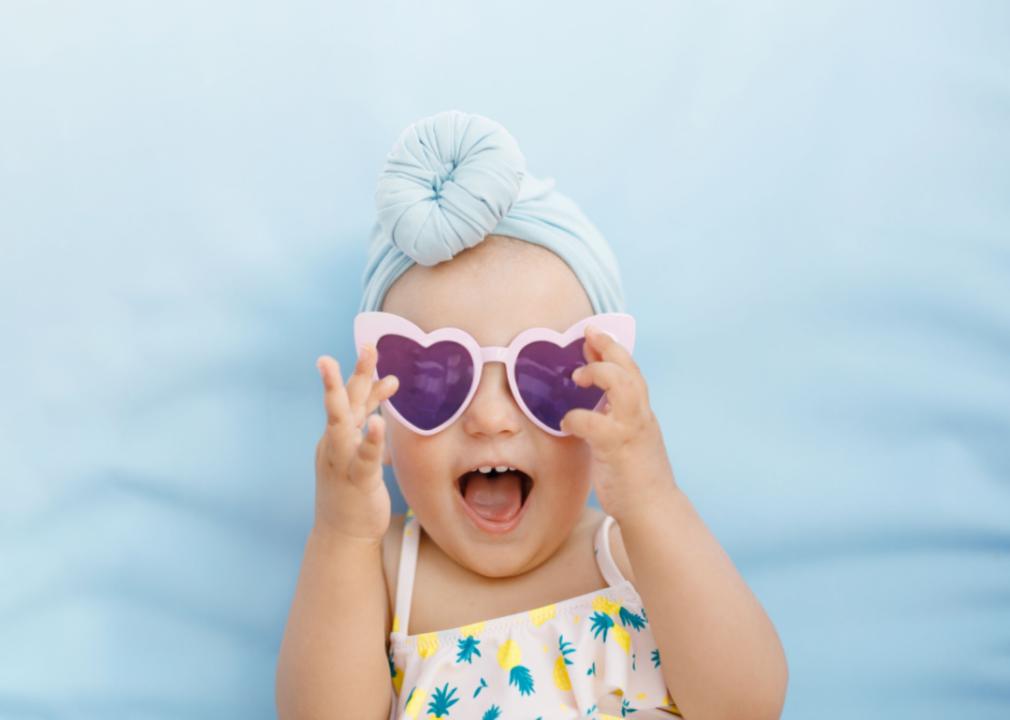
KDdesignphoto // Shutterstock
1988: Keywanna
A baby girl wearing heart-shaped sunglasses smiling.
The name Keywanna is so rare that only 41 American babies have been given this name since 1900, five of whom were in 1988. It is likely derived from other uncommon names like Ikewana—meaning “warrior,” “innovative,” and “handsome”—and Wanna, a Hebrew-Spanish nickname for Juanita meaning “God is gracious.”
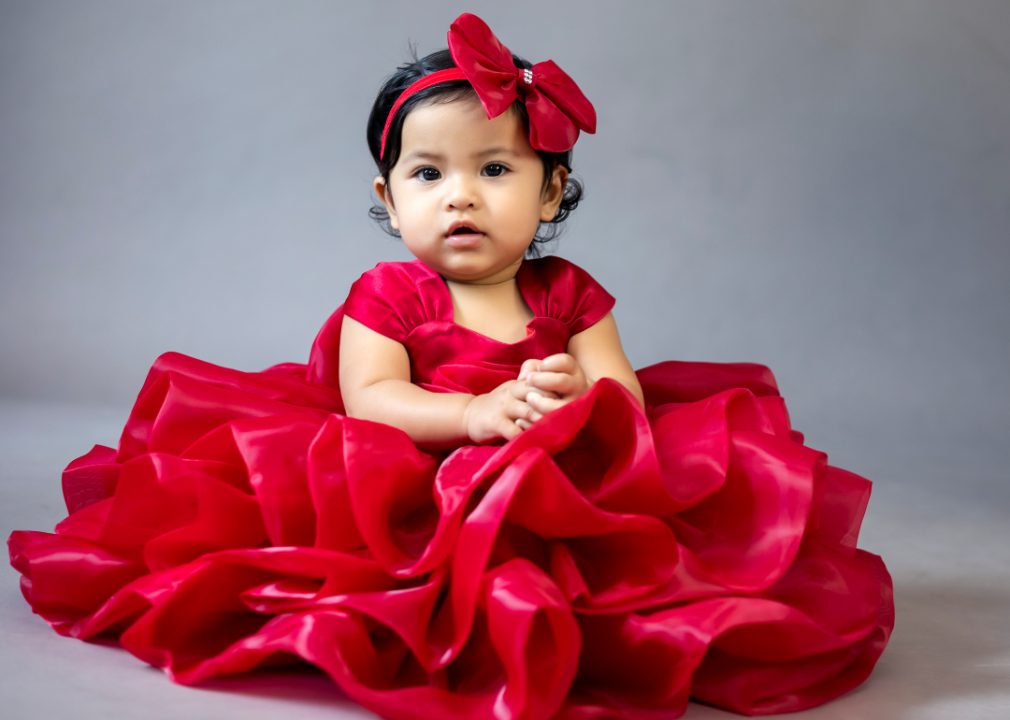
Canva
1989: Gavrielle
Hispanic baby girl posing in a red dress.
The name Gabrielle climbed steadily through the late 1980s and into the ’90s, but a few parents changed one letter to create a more unique name, Gavrielle. Despite the change in spelling, Gavrielle retains the same meaning as its predecessor: “God is my strength.”
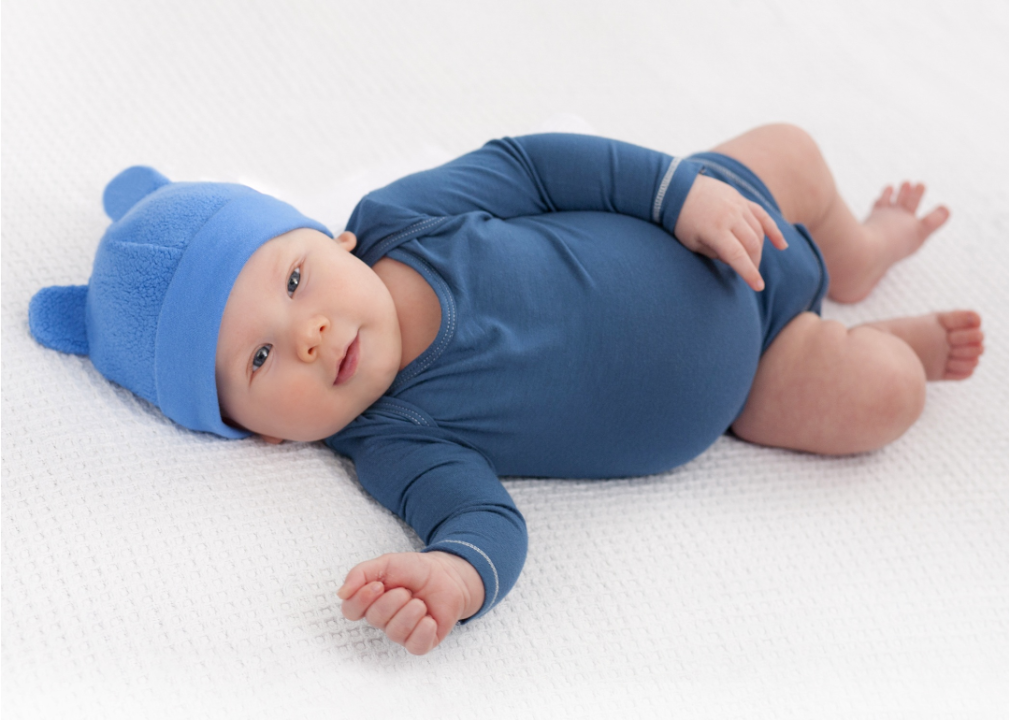
Canva
1990: Ranard
A baby boy wearing all blue outfit lying down on his back.
The five sets of parents who chose the name Ranard in 1990 may have been inspired by a notable State Department veteran who died in July of that year. Donald Louis Ranard, who served as chief of Korean affairs in the ’70s, was perhaps best known for providing key testimony about Koreagate, the 1976 scandal in which Korean officials allegedly bribed members of the U.S. Congress.
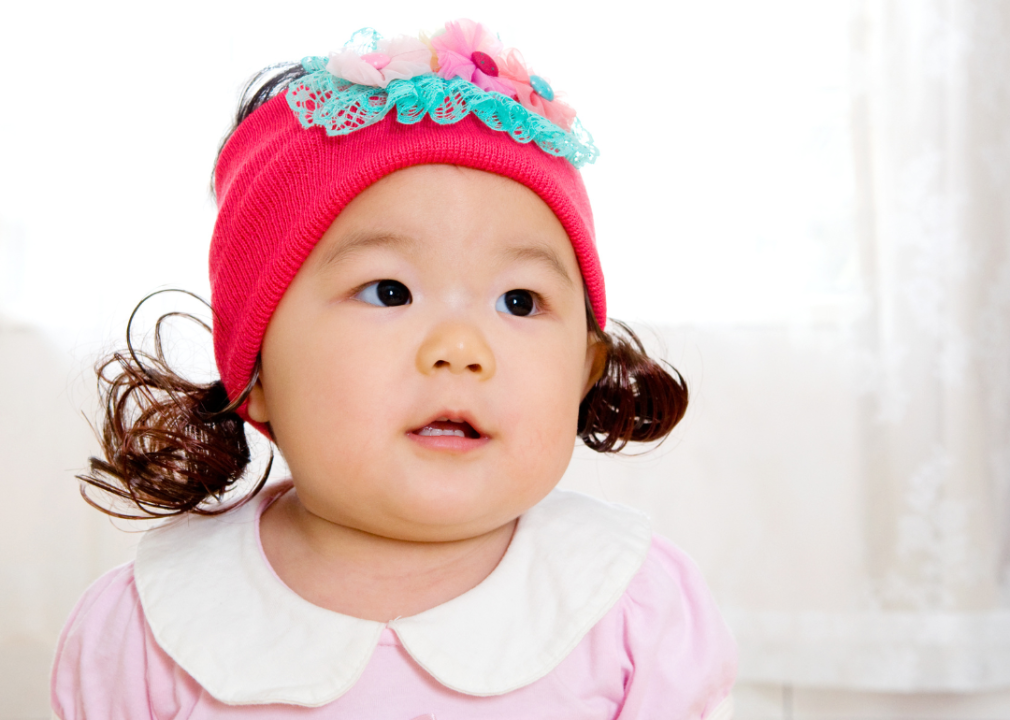
Canva
1991: Deborha
Asian baby girl with ponytails wearing a pink hat.
This rare name may look like it has a typo, inverting the last two letters of the more common name Deborah, but it’s not. Both versions could go by Debbie for short, though, a fashionable nickname in the late ’80s and early ’90s thanks to pop star Debbie Gibson, who had an impressive 11 hits on the Billboard Hot 100 between 1987 and 1993.
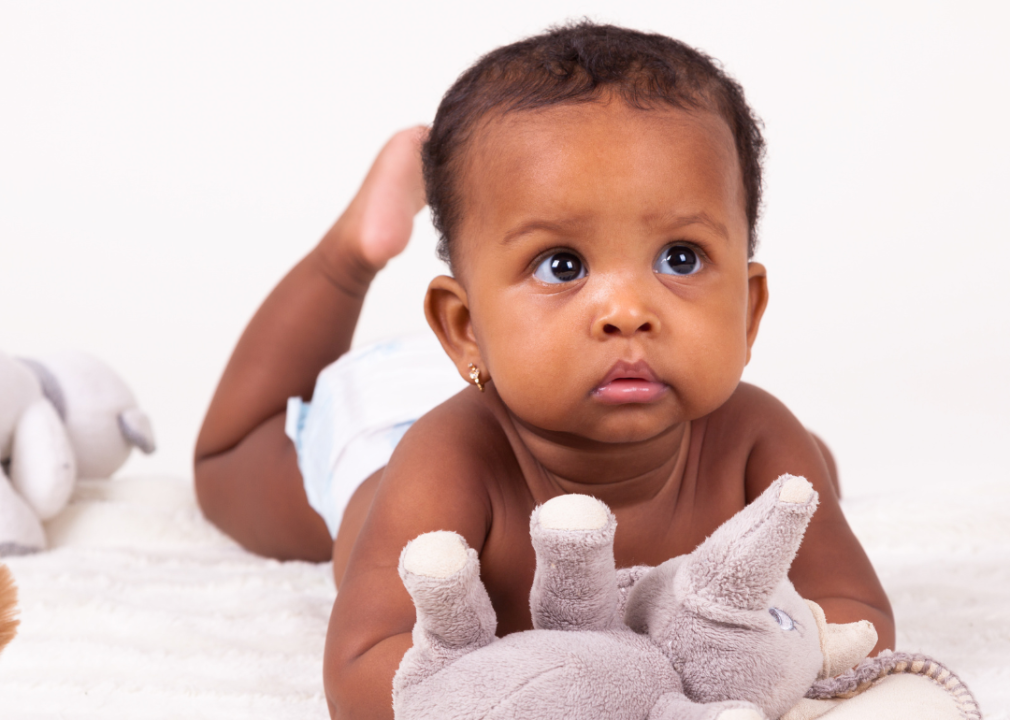
Canva
1992: Tyshonda
African American baby girl lying on her stomach.
Like Dashonda, Tyshonda stems from the base name Shonda and it may have set a trend of names beginning with “Tysh.” Tyshawn, for example, broke into the top 1,000 on the SSA’s list in 1992; meanwhile, Tysha is the name of Tyrion’s first wife in George R.R. Martin’s fantasy series A Song of Ice and Fire, which launched in 1996.
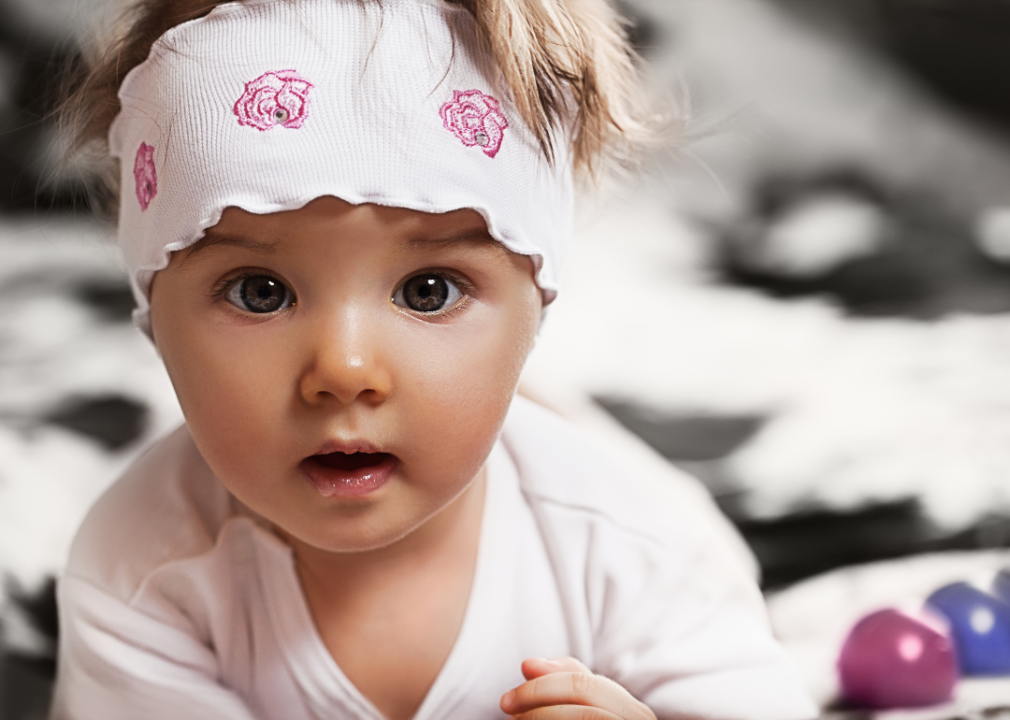
Canva
1993: Marenda
A closeup of baby girl with large eyes.
Marenda is a spin-off that shares Latin roots and the meaning “admirable” with its more commonplace counterpart Miranda. In fact, the alternative Marenda may have emerged because 1993 was a big year for Mirandas—actor Miranda Richardson received an Oscar nomination and won a BAFTA for Best Supporting Actress for her performance in “Damage” and Sally Field starred as lovable mom Miranda Hillard in one of the year’s top comedies, “Mrs. Doubtfire.”
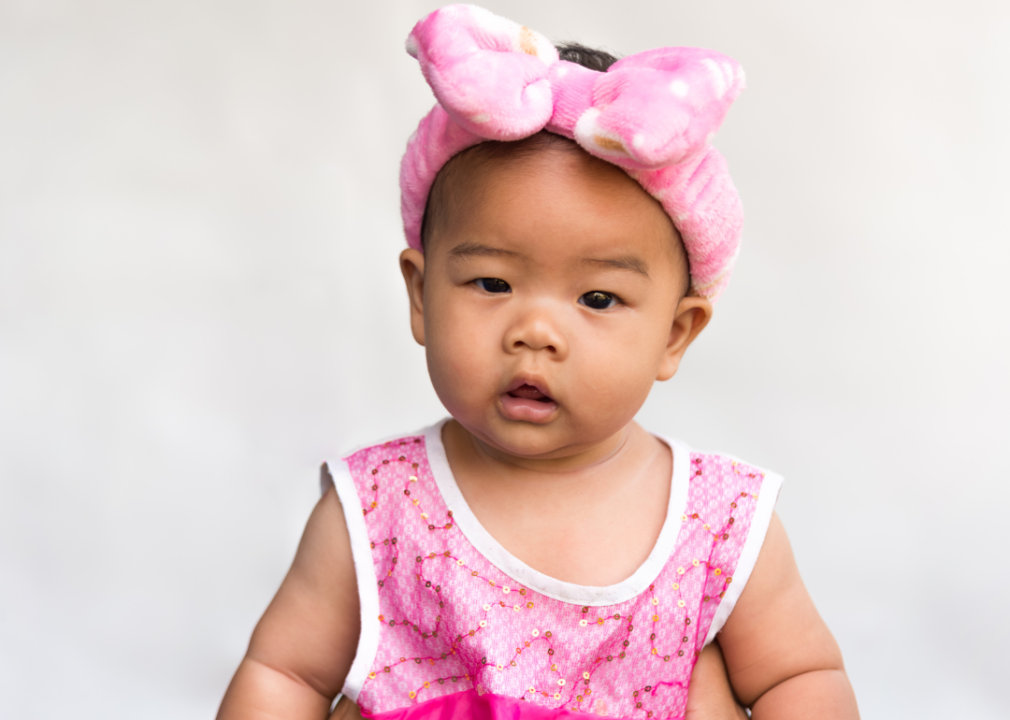
Canva
1994: Drea
Asian girl in a large pink bow.
The name Drea, often short for Andrea, popped up a few times in 1994 before actor Drea de Matteo made it a household name five years later when she starred on the hit HBO series “The Sopranos” as Adriana.
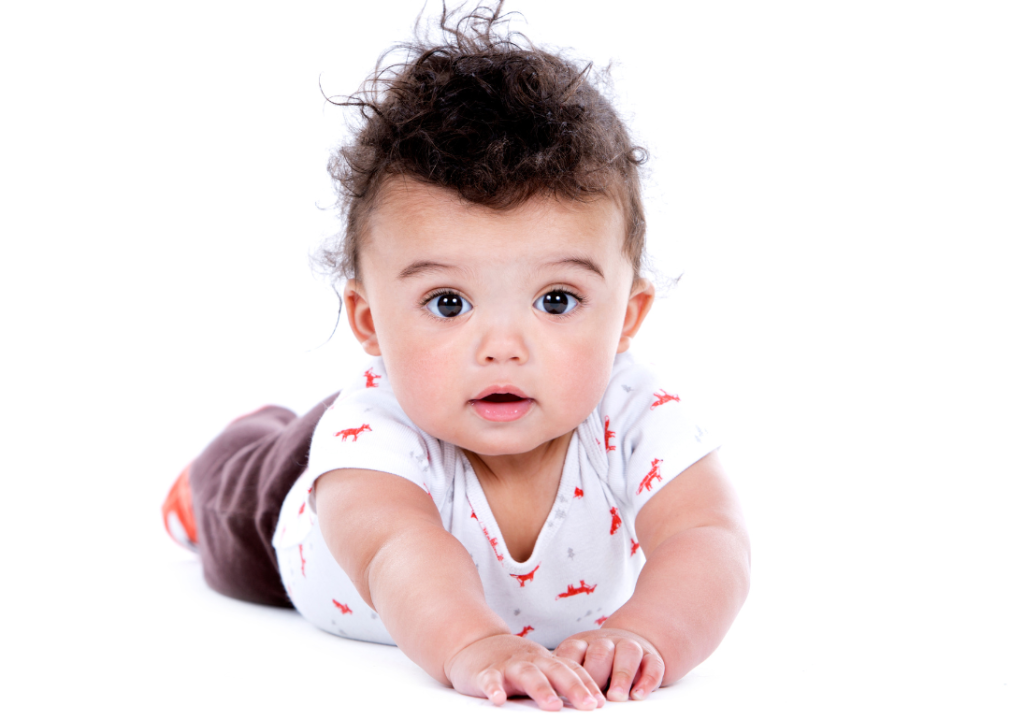
Canva
1995: Deronn
Hispanic baby boy with messy hair.
A few hockey fans in 1995 may have gotten creative, naming their kids after one of the season’s most notable players—and adding an extra “n” for flair. At just 19, Winnipeg Jets defenseman Deron Quint scored two goals in four seconds, tying the NHL record for the fastest pair of goals made by a single player.

Canva
1996: Haneef
A baby boy playing with bubbles.
This unique moniker, given a handful of times in 1996, is an uncommon spelling of the more recognizable Hanif, an Arabic name meaning “true believer.” It’s also a noun describing a certain type of person in pre-Islamic Arabia, and according to Merriam-Webster, the word hanif refers to a hermit who “lived a wandering ascetic life and professed a vague form of monotheism.”
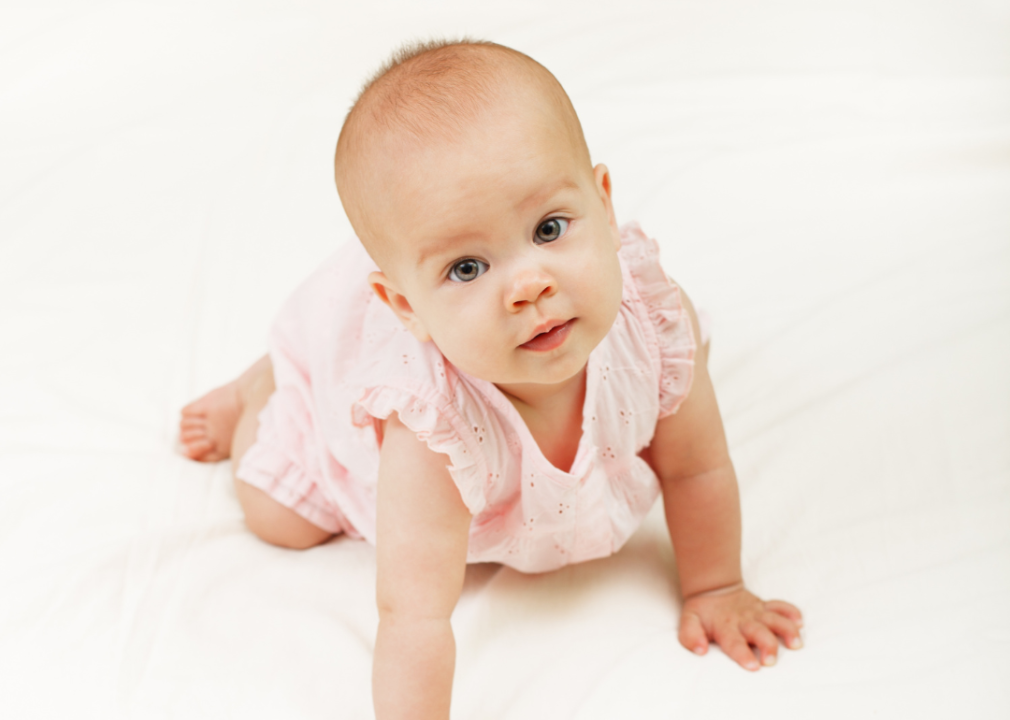
Canva
1997: Emira
A closeup of a baby girl in pink summer dress looking up.
Although rare, the name Emira—meaning “leader” or “princess”—was on the minds of moviegoers in 1997 thanks to the film “Welcome to Sarajevo.” Stephen Dillane and Woody Harrelson star as a pair of journalists visiting the title city at the beginning of the Bosnian War, one of whom decides to illegally bring a young child, named Emira, played by young actor Emira Nušević, home with them.

Canva
1998: Jahliyah
A baby girl in pink tutu dress playing and looking up.
Like many other names on this list, Jahliyah appears to be a derivative of similar but more common names—in this case, Jaliyah and Aaliyah, both of which mean “ascending” or “exalted.” This variation that five newborns were given in 1998 may have been influenced by rising singer Aaliyah, whose hit song “Are You That Somebody?” spent seven weeks at #1 on the Billboard Mainstream R&B/Hip Hop chart.
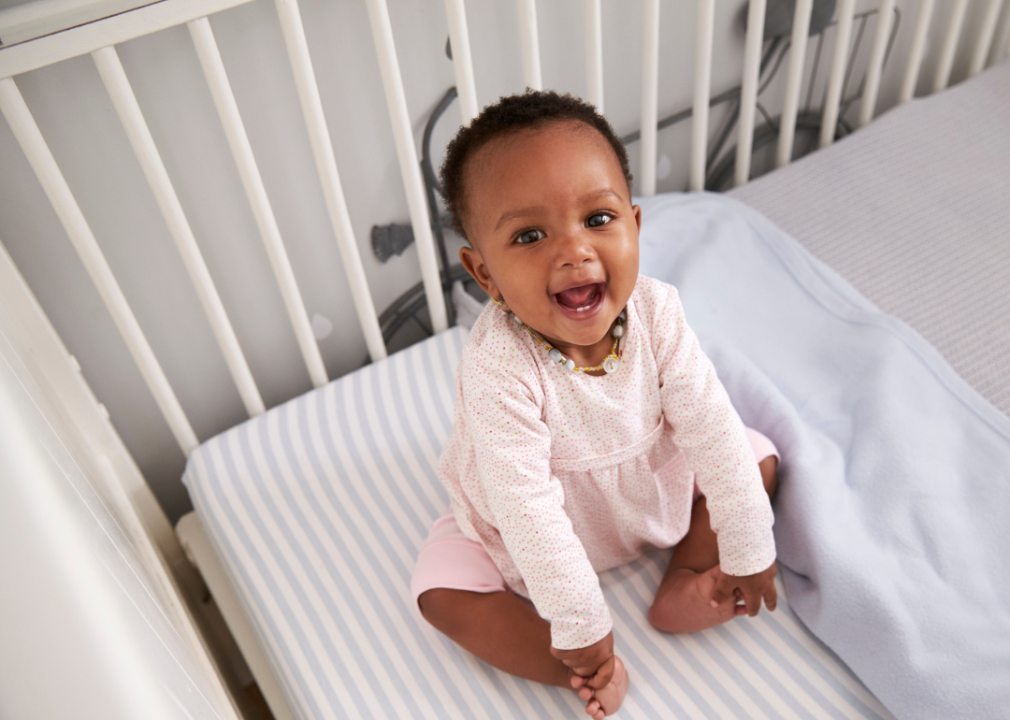
Canva
1999: Evgenia
African baby girl sitting in a crib smiling.
Substituting a “v” for a “u” adds a little extra verve to the classic Greek name Eugenia, meaning “well-born” or “noble.” The “Ev” spelling is also more common in countries whose languages don’t have the English “w” sound, like Russia, Armenia, Turkey, and Albania. Russian figure skater Evgenia Medvedeva, coincidentally born in 1999, is one of the most recognizable public figures with this spelling of the name.
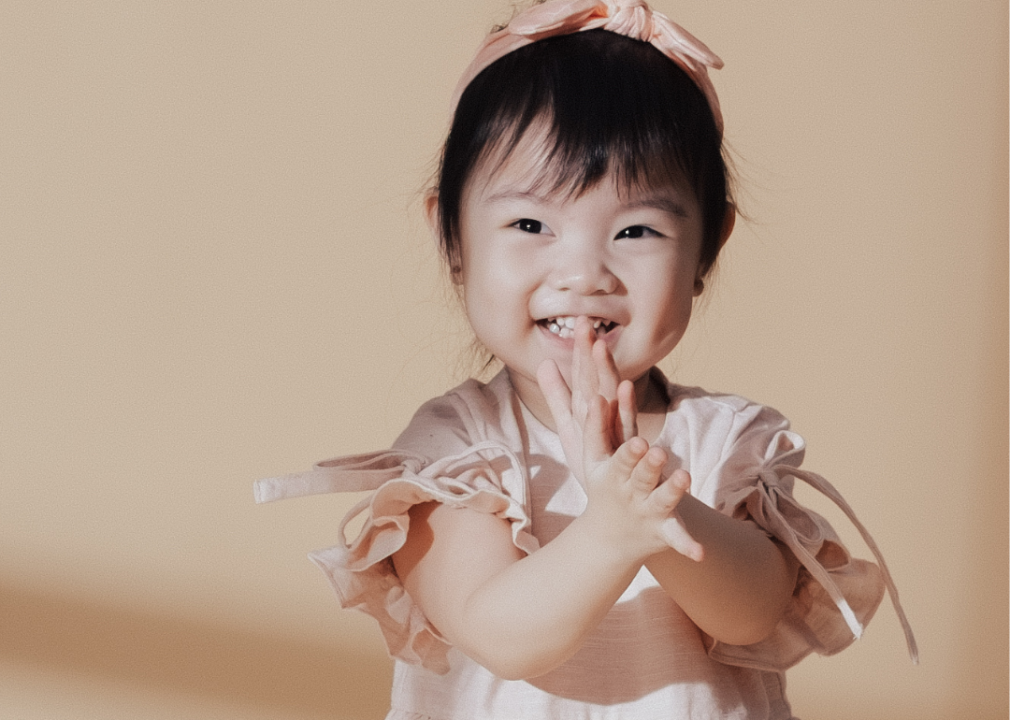
Canva
2000: Darleny
Asian baby girl in a light pink dress smiling.
Although the British name Darlene, meaning “darling,” peaked in popularity decades earlier in 1958, it was still a more prevalent choice at the beginning of the new millennium than its spinoff Darleny, or Darlenny. As of 2000, Darlene was still holding strong in the top 900 most popular names, according to the SSA database. Darleny, on the other hand, hasn’t cracked into the top 1,000.

Canva
2001: Yulliana
A baby girl in a pool smiling.
The year 2001 saw a few instances of parents in the U.S. choosing Yulliana over Yuliana, a traditional Russian spelling of the name meaning “youthful.” In 2001, the single-“l” version peaked in popularity at #691 on the SSA list. Yuliana and Yulliana are also variants of the name Juliana, which was seeing a bump in popularity by 2001 as well, on its way to peak at #146 in 2010.
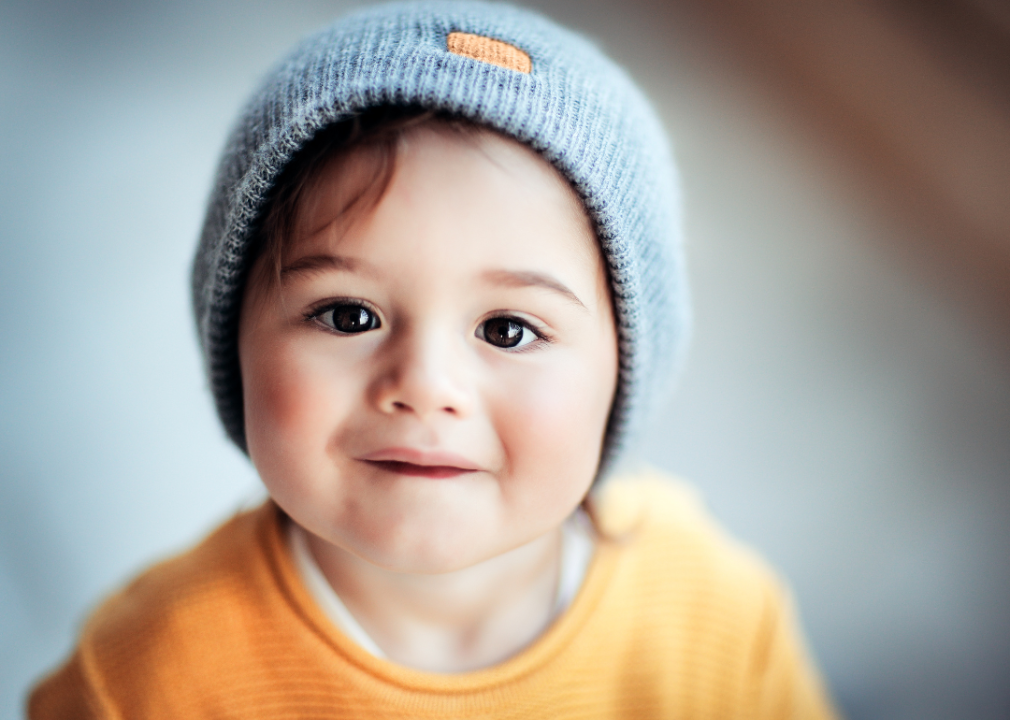
Canva
2002: Garhett
Baby boy in a warm winter hat.
One can easily see Garhett’s lineage as an alternate spelling for Garrett, a name of German and Irish origin meaning “bravery.” The name with the traditional spelling peaked on the SSA list in 2000 but sat comfortably in the top 200 for the entire decade. Perhaps a certain pop culture influence contributed to Garrett getting a bump at the turn of the century: Brad Garrett was gaining fame for his performance as Robert Barone on “Everybody Loves Raymond” at the time, even winning his first Emmy for it in 2002. As the name started cropping up more and more, some parents seemingly dared to be different and substituted the second “r” for an “h.”
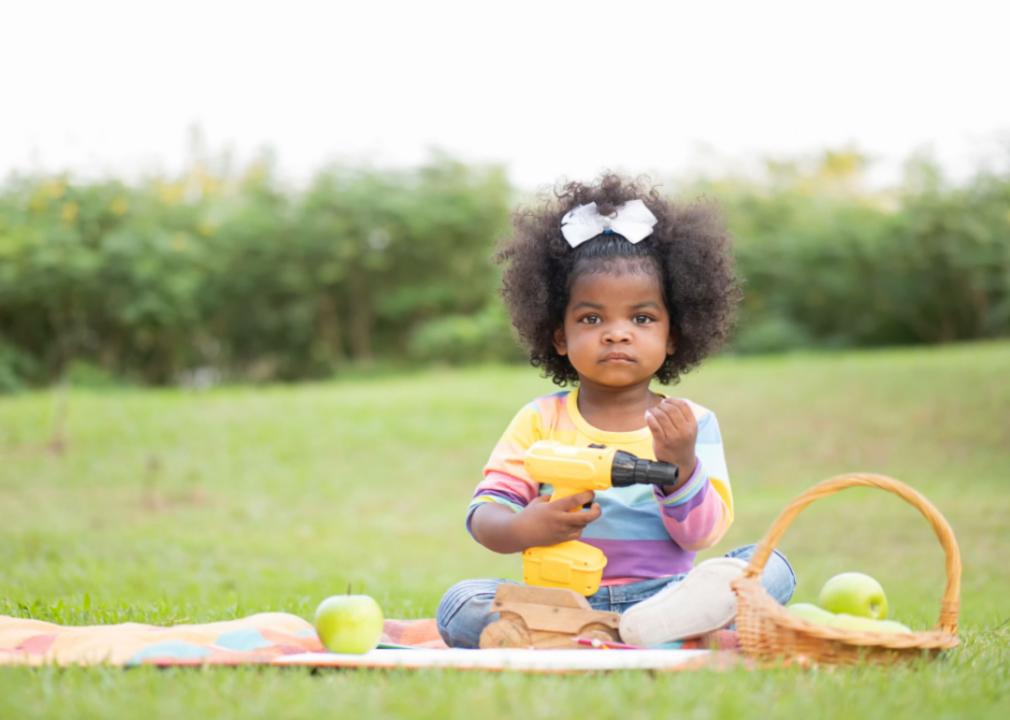
PorporLing // Shutterstock
2003: Kashyia
African American girl playing outdoors holding a toy drill.
Baby names starting with the letter “k” historically haven’t been the most popular choices, with only two names—Karen and Kimberly—landing in the top five on the SSA’s list over the past 100 years. Kashyia is one rare “k” name that never even came close to the top five, showing up for the first time in 2003 and quickly peaking three years later with just seven babies given the name.

Prostock-studio // Shutterstock
2004: Shontell
African American infant sitting on bed.
Many names on this list add an extra letter to an old favorite, creating a new variation, but Shontell does the opposite, dropping the “e” from the end of the more popular Shontelle. Like Shonda—the base of 1987’s unique name Dashonda and 1992’s Tyshonda—Shontelle derives from the Old French name Chantal meaning “stone.”
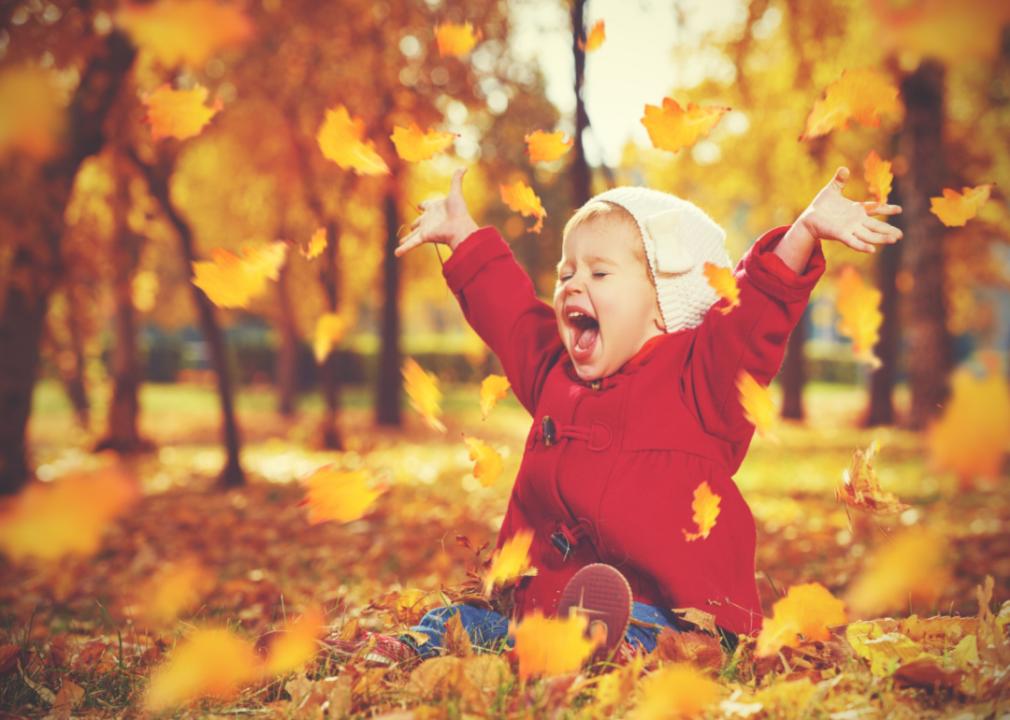
Evgeny Atamanenko // Shutterstock
2005: Briele
A baby girl laughing and playing outdoors.
As Brielle, meaning “heroine of God,” steadily moved up on the SSA’s list every year between 2002 and 2012, it’s not surprising that a few expectant parents adopted an alternate spelling of this trendy name. Maybe some were inspired by their German heritage though; Briele is also an Old German surname that was first given to those who inhabited a village in the Rhineland called Briel.
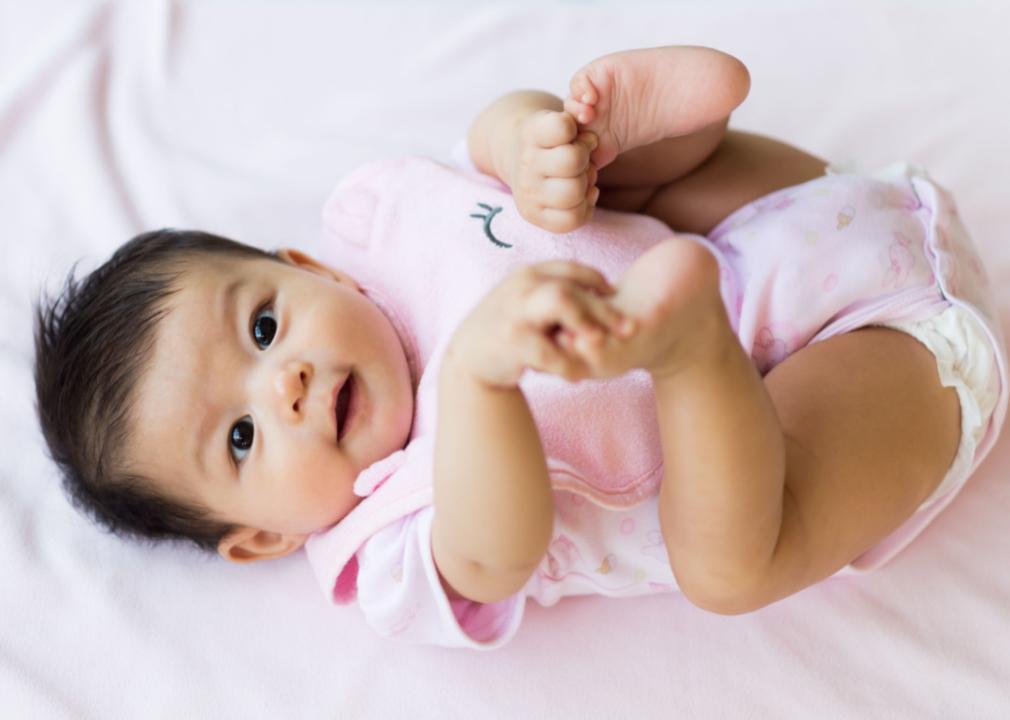
Pushish Images // Shutterstock
2006: Ahlina
Asian baby lying on a blanket.
A bit of Hollywood scandal may have played a part in the appearance of this twist on the Russian name Alina meaning “light.” In May 2006, now-disgraced director Brett Ratner was a big name in entertainment news—both for the release of his film “X-Men: The Last Stand” and for the widely publicized claim, via Page Six, that actor Lindsay Lohan charged into his home, outraged to find him in bed with Alina Puscau, a Romanian model and Ratner’s girlfriend at the time.
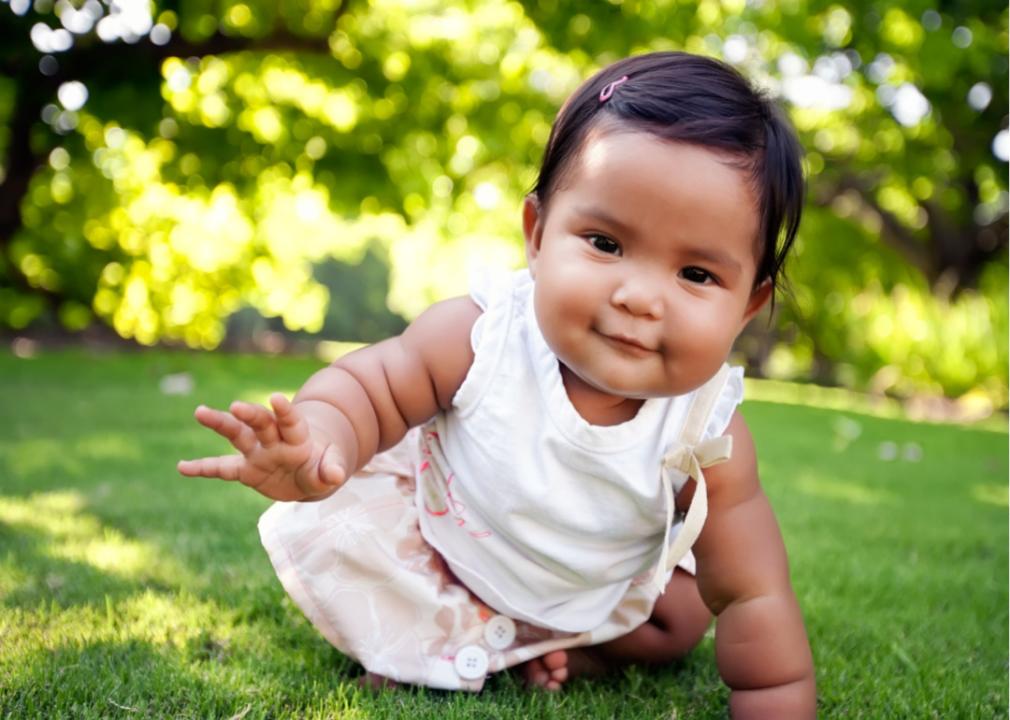
Marlon Lopez MMG1 Design // Shutterstock
2007: Abiha
Hispanic baby girl with a smile on her face, reaching out to take her first crawling step.
Although it is a name with rich Islamic tradition, less than 175 U.S. children were named Abiha between the years of 1880 and 2021. The name dates back to Fatima Al-Zahra, daughter of the prophet Muhammad born in A.D. 615, who was given many titles during her lifetime including this one, meaning “mother of her father.”
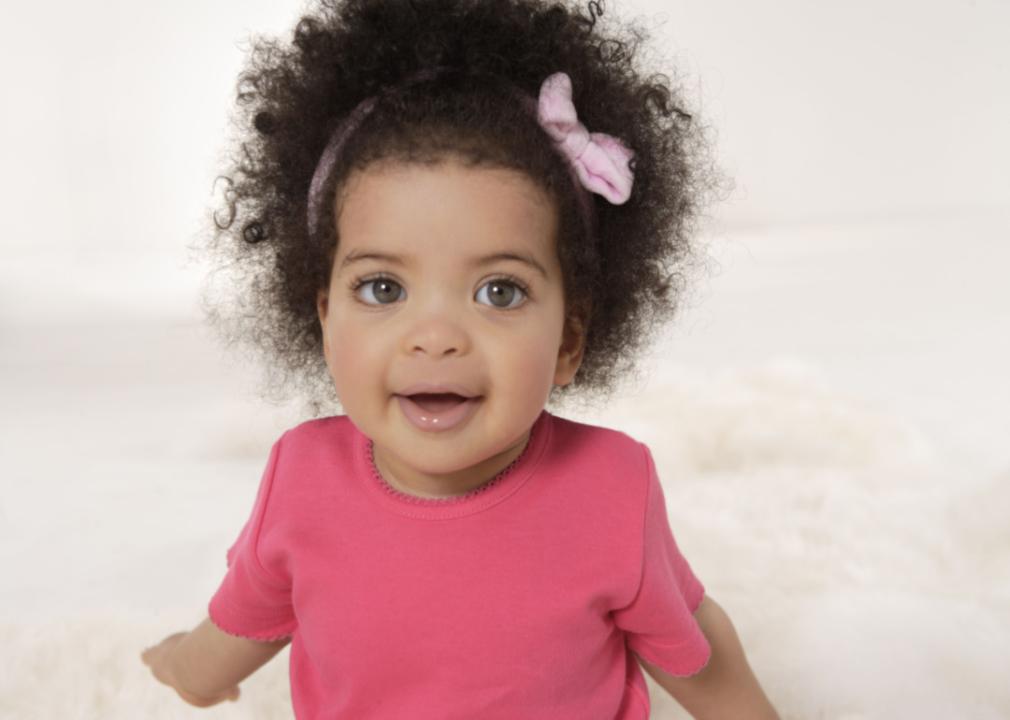
Altrendo Images // Shutterstock
2008: Adasyn
Closeup of an African American baby girl smiling.
Actor Kate Walsh began playing Dr. Addison Montgomery on “Grey’s Anatomy” in 2005, and it’s possible this memorable character—who got her own spinoff, “Private Practice,” in 2007—inspired the uptick in the name’s popularity in subsequent years. The name with the traditional Addison spelling entered the top 30 on the SSA list in 2006, potentially inspiring variations like Adasyn.
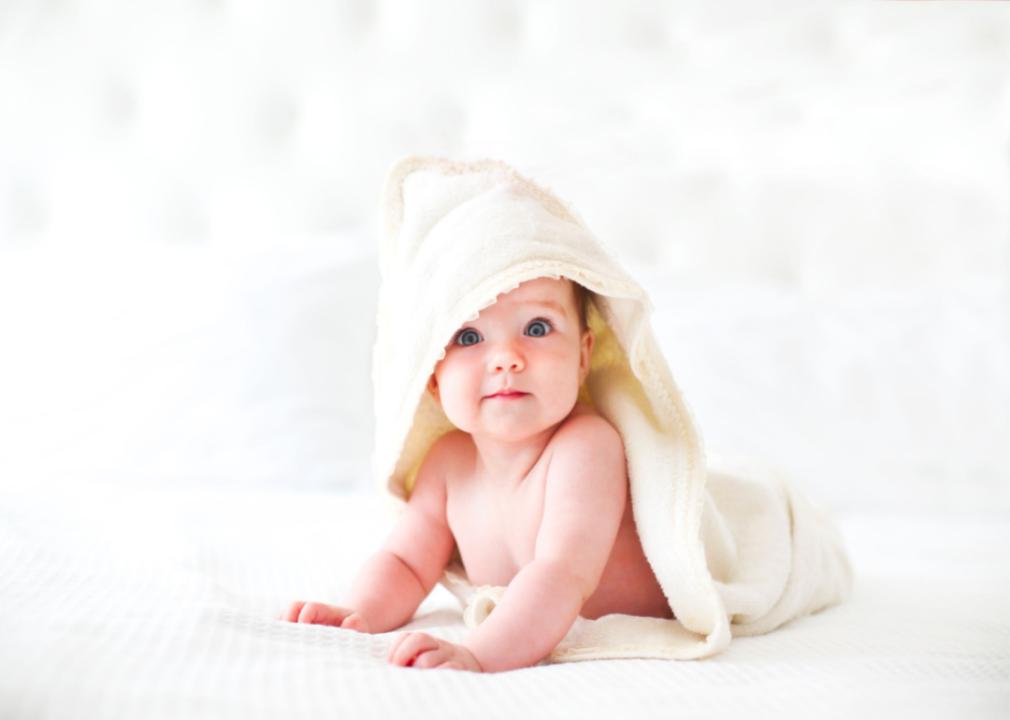
Dasha Petrenko // Shutterstock
2009: Navie
A baby wearing towel after bath.
It’s hard to deny that the name Navie looks and sounds a lot like Na’vi, the species inhabiting Pandora in James Cameron’s “Avatar,” which just so happened to be released in 2009.
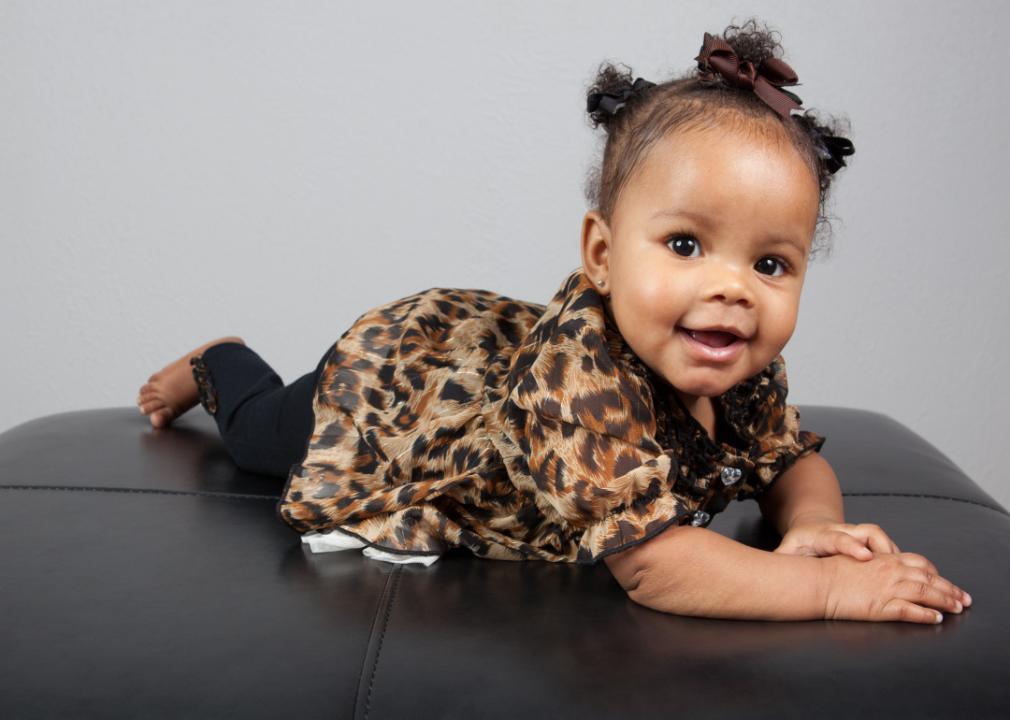
Solphoto // Shutterstock
2010: Khamiah
African American baby girl wearing a brown dress smiling.
Like its variants Khamia and Khamaia, Khamiah is not a commonly used name in the U.S. This rarely used name would, however, lend itself to the nickname Mia, which has ranked consistently in the top 10 on the SSA list since 2009.
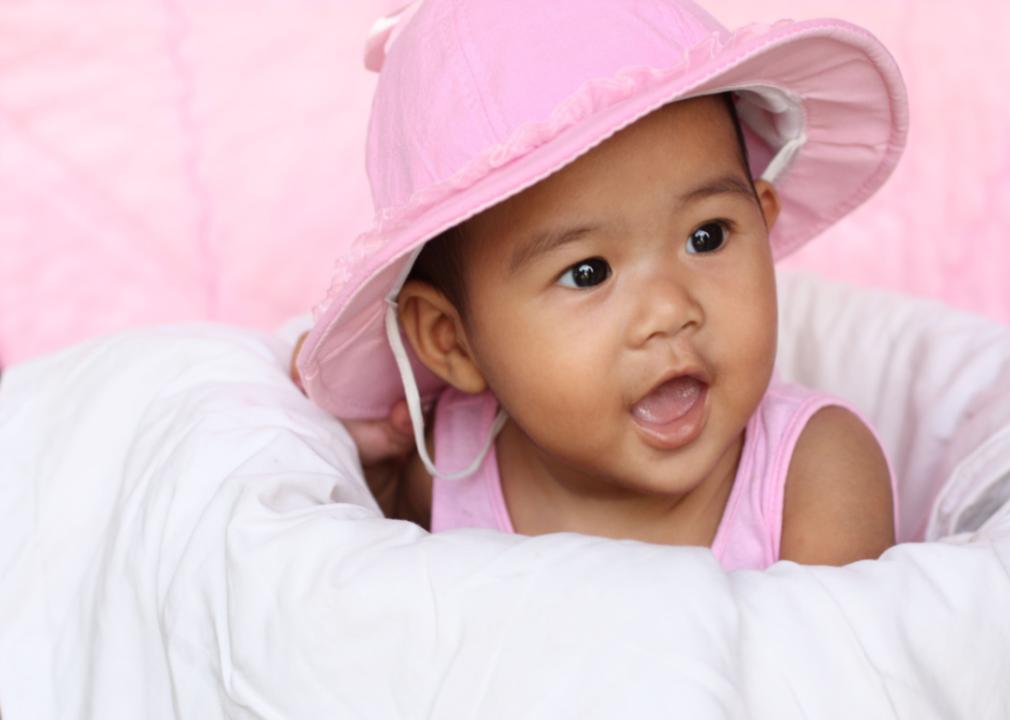
wattana // Shutterstock
2011: Allenna
Asian baby with big black eyes wearing a pink hat and smile.
There’s a clear thread between the rare name Allena and the more common Alanna: They both trace back to the Old German meaning “precious.” Alanna won the popularity contest by leaps and bounds, though, nearly breaking into the top 500 most popular names in 2011, according to the SSA data.
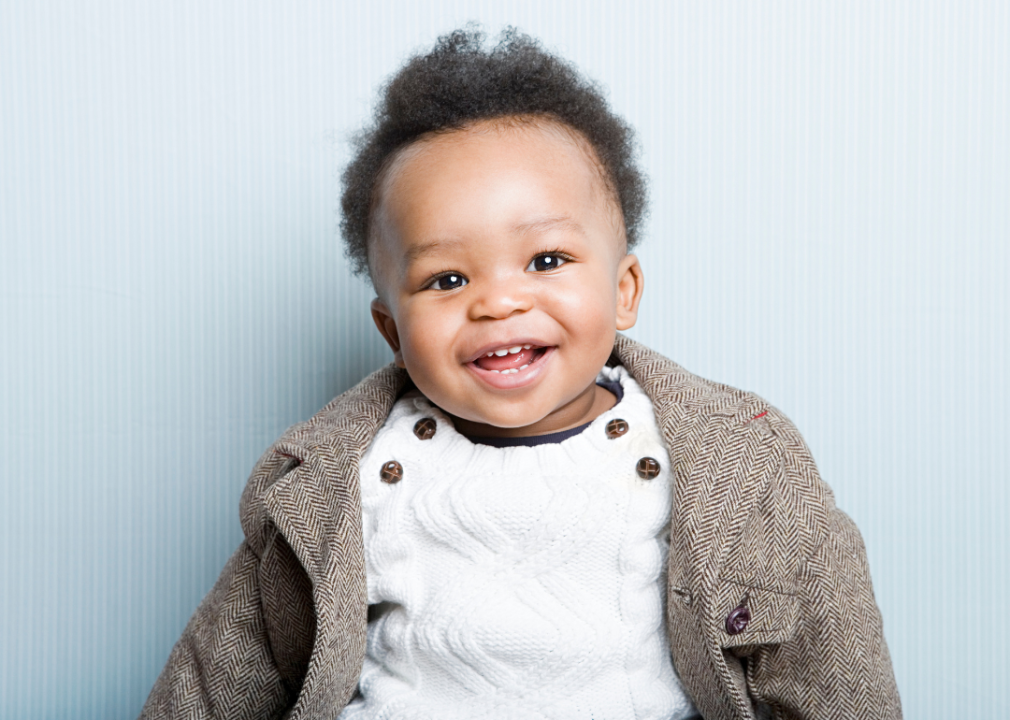
Canva
2012: Franciszek
African American baby boy wearing a jacket.
The Polish name Franciszek—a derivative of Francis, which also means “free man”—was in the news in 2012 thanks to Poland’s soccer coach Franciszek Smuda. After being knocked out of the Euro 2012, Smuda walked away from the team and allowed his contract to expire.
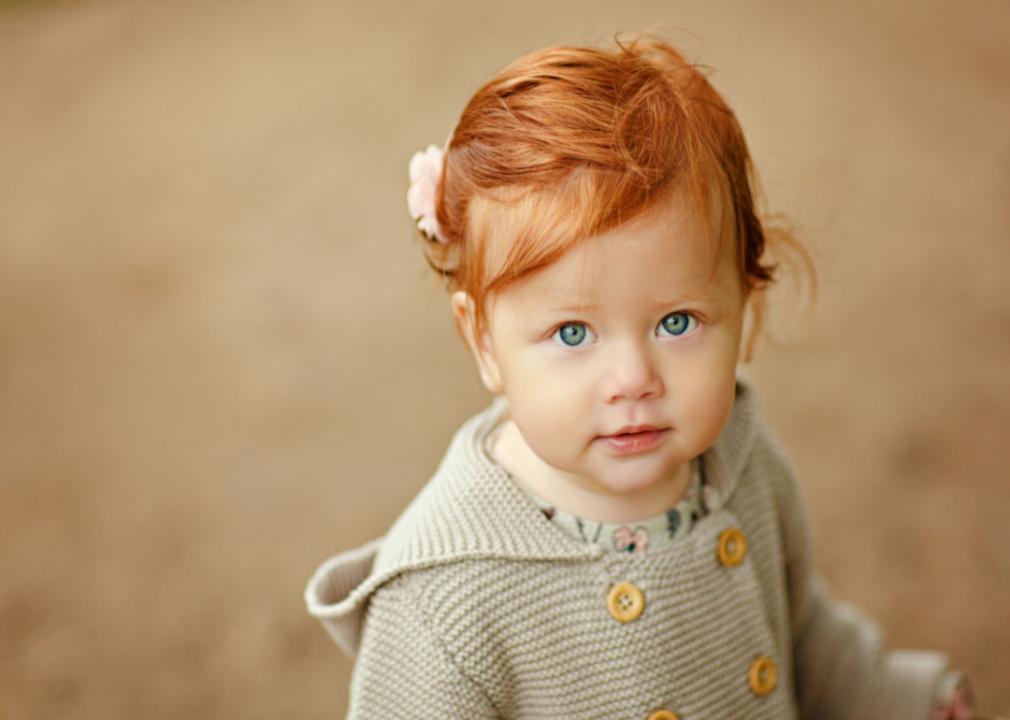
Coy_Creek // Shutterstock
2013: Adriahna
Red-haired baby girl closeup portrait.
Adriana Lima was among the top three highest-paid fashion models in 2013 and the longest-active Victoria’s Secret Angel at the time; so it’s possible a variation of her name, Adriahna, was inspired by her more common iteration. With Latin roots meaning “from Hadria,” Adriana came in at #150 on the SSA list in 2013—a far cry from the five instances of Adriahna recorded that same year.
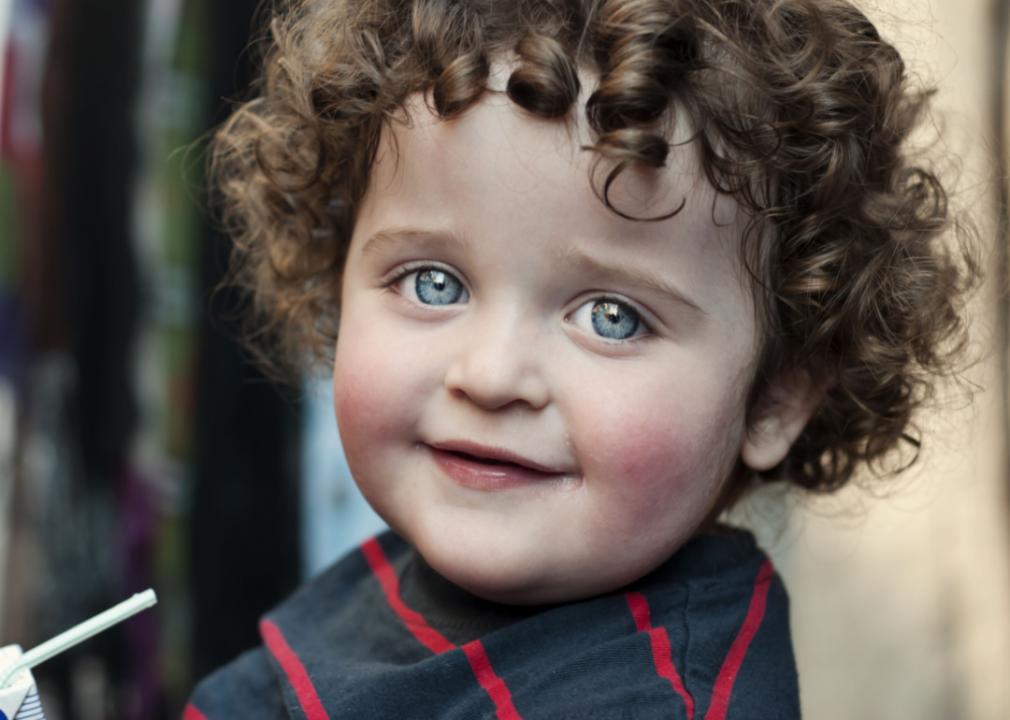
Mr.Exen // Shutterstock
2014: Moss
Baby boy with big blue eyes and curly hair.
As a first name, Moss was barely used in 2014, but the surname Moss was everywhere: supermodel Kate Moss turned 40 in style and launched a new clothing collection with British brand Topshop; Oakland Athletics’ Brandon Moss went to his first All-Star game before being traded when the back half of his season went south; and “Mad Men” star Elisabeth Moss lit up the big screen in the comedy-drama “The One I Love.” Five new parents were inspired, it seems.
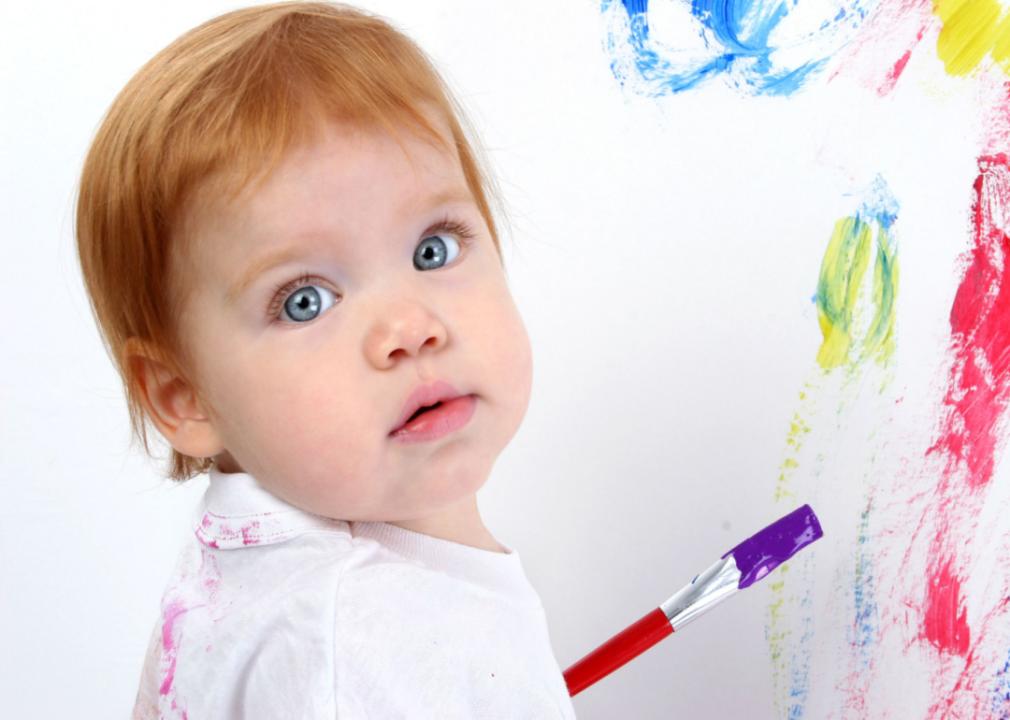
Ixepop // Shutterstock
2015: Ahsoka
Redhead baby painting at poster board.
One would be hard-pressed to think that “Star Wars” didn’t influence Ahsoka as a baby name in 2015—especially when the fan-favorite character from the 2008 movie “Star Wars: The Clone Wars” and subsequent series popped up in “Star Wars: Rebels” just the year before. However, the name Ahsoka also reaches much further back to the ancient Indian language of Sanskrit, from which it draws the meanings “hopeful” and “pure.”
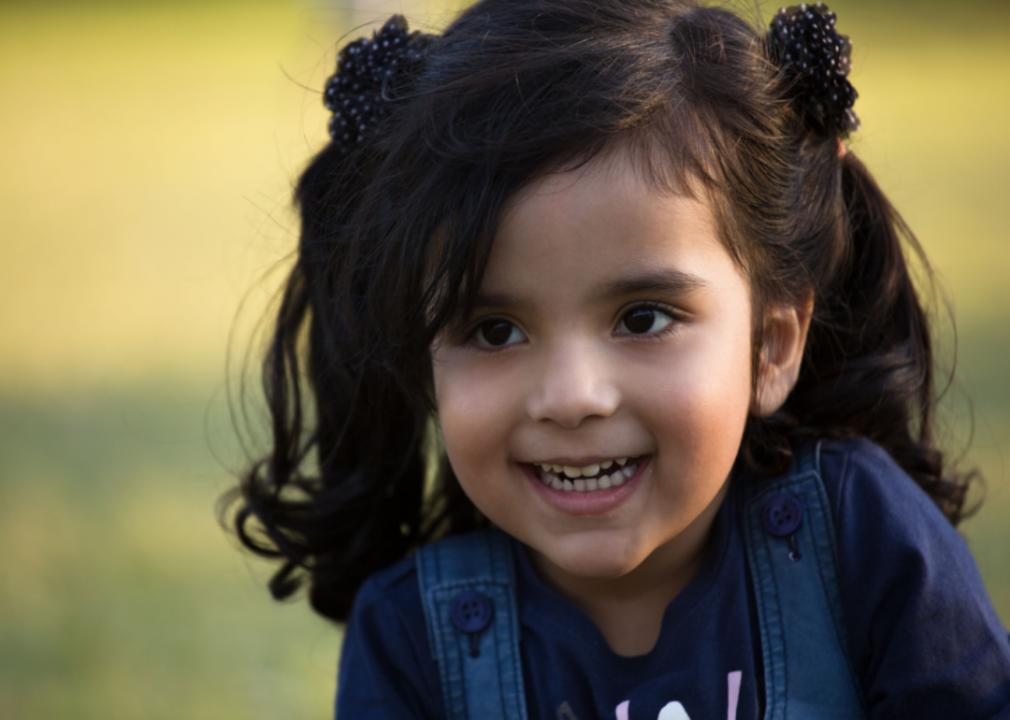
Rehan Qureshi // Shutterstock
2016: Riplee
Smiling Hispanic girl with long ponytails.
The 21st century has seen a rise in alternative suffixes in the U.S., i.e. the Wrenlees and Brynleighs you may have seen on your Facebook or Instagram pages. Enter Riplee, presumably an evolution of the gender-neutral British name Ripley, meaning “a strip of clearing in the woods.” Although the “ey” spelling might be more well-known, it’s still not a particularly common name—aside from the popular Ripley’s Believe It or Not franchise. It’s never ranked in the top 1,000 names since 1900, according to the SSA database.
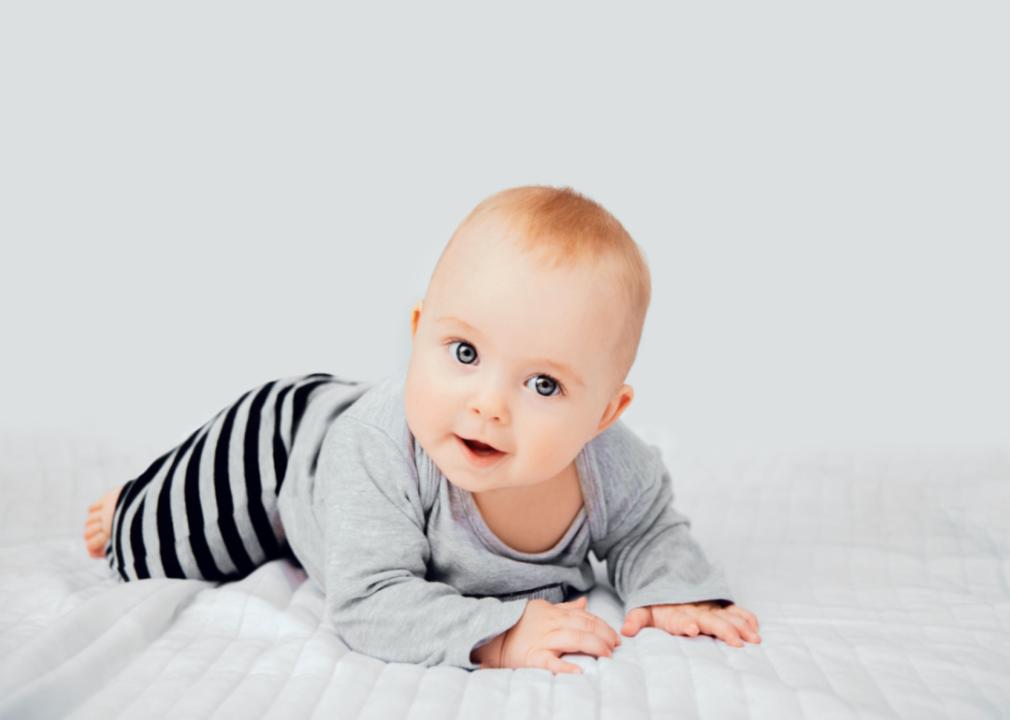
Serenko Natalia // Shutterstock
2017: Bhavith
Baby on a white soft blanket.
The traditional Indian name Bhavith is so exceedingly rare in the U.S. that not only was the name recorded just five times in 2017, but these are the only five times the name has ever been used in the U.S. between 1880 and 2021. A slightly more common choice is Bhavin, a Sanskrit name meaning “blessing” or “illustrious” that differs by just a few letters.
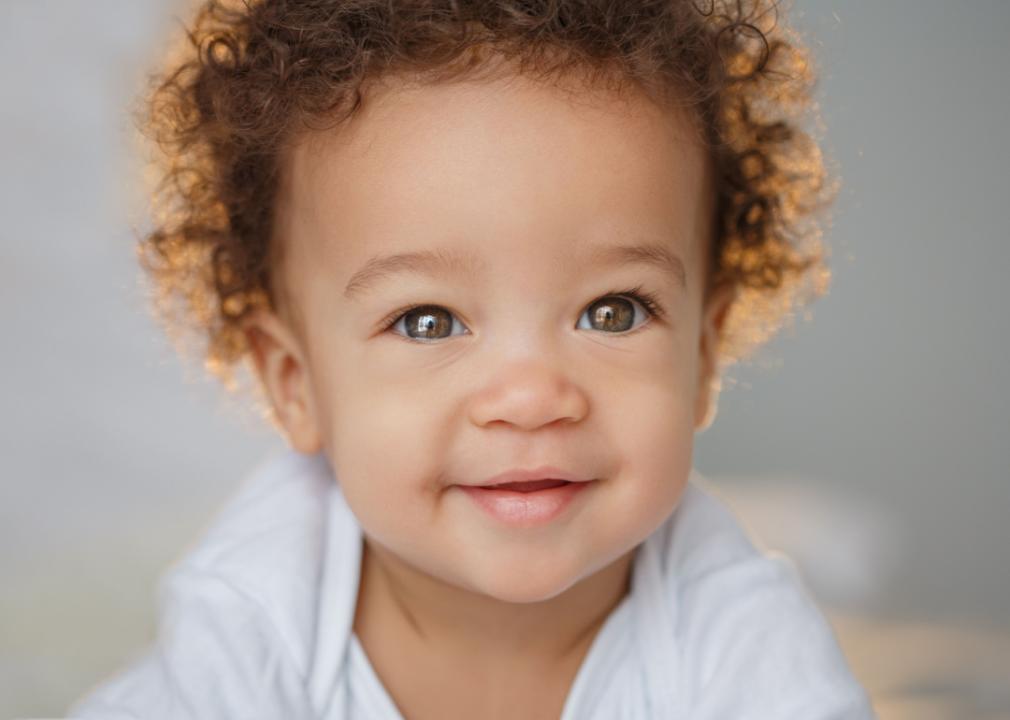
Miramiska // Shutterstock
2018: Mahera
African American boy with curly hair smiling.
Like many others on this list, Mahera is part of a family of similar names (Mahira, Mahirah, and Mahir) that vary in spelling but have similar meanings (“skillful” or “expert”). Although uncommon in the U.S., these names are often used worldwide—for example, in 2018, one of Pakistan’s most popular actors Mahira Khan strolled the red carpet at the Cannes Film Festival and made waves for her role in the crime-drama “Verna.” Perhaps she inspired some American parents to use the alternative spelling Mahera.
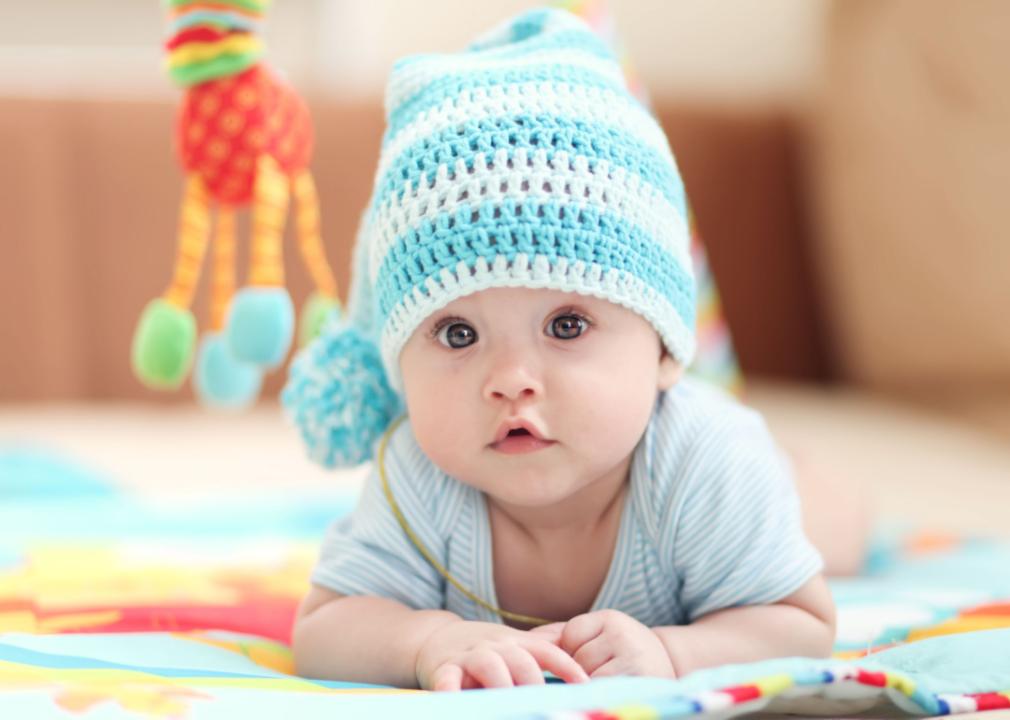
Pshenina_m // Shutterstock
2019: Noelli
Baby girl lying on a children’s rug in the white-blue cap.
In 2019, Anna Kendrick and Bill Hader headlined the Disney movie “Noelle,” about Santa’s daughter who’s forced to take over his responsibilities when he retires. This family comedy might have inspired the five newborns to be named Noelli in 2019, a variation of the more traditional French name Noelle, which means “Christmas.” The more common version has been among the top 300 of the SSA’s list since 2013.
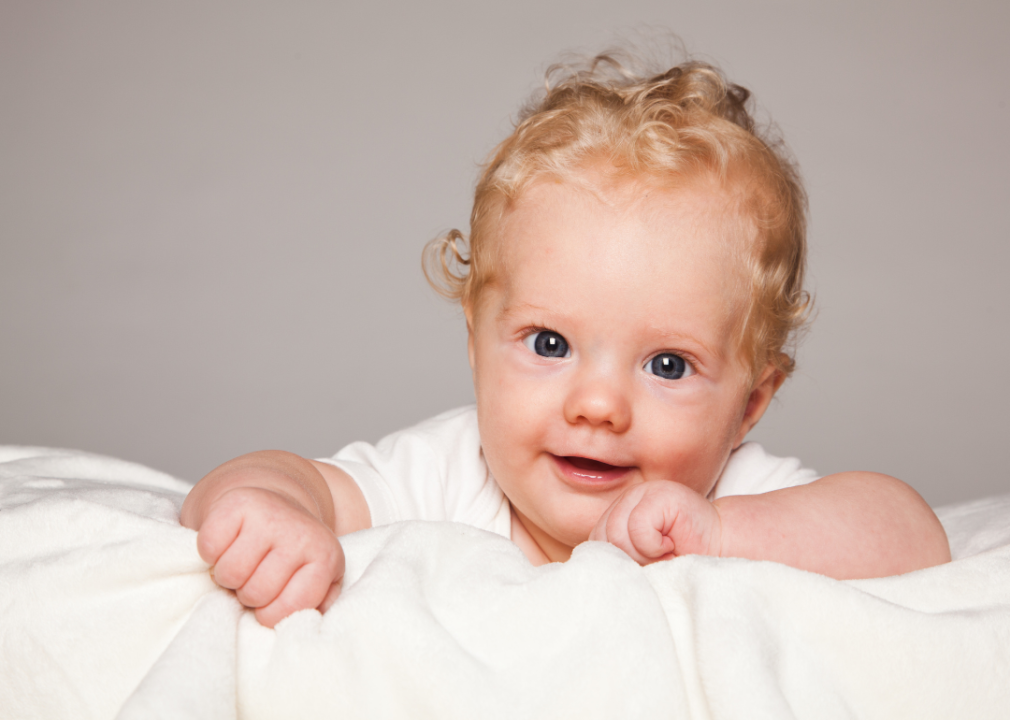
Canva
2020: Massey
A blond baby boy with curly hair.
The year 2020 will forever stand out in the annals of history due to the COVID-19 virus that spread rampantly, unnerving people around the globe, especially expectant parents. It’s not surprising then that a few of them expressed gratitude for the health and safety of their newborns by giving them names like Massey, a British name with French and Hebrew roots meaning “gift of God.”
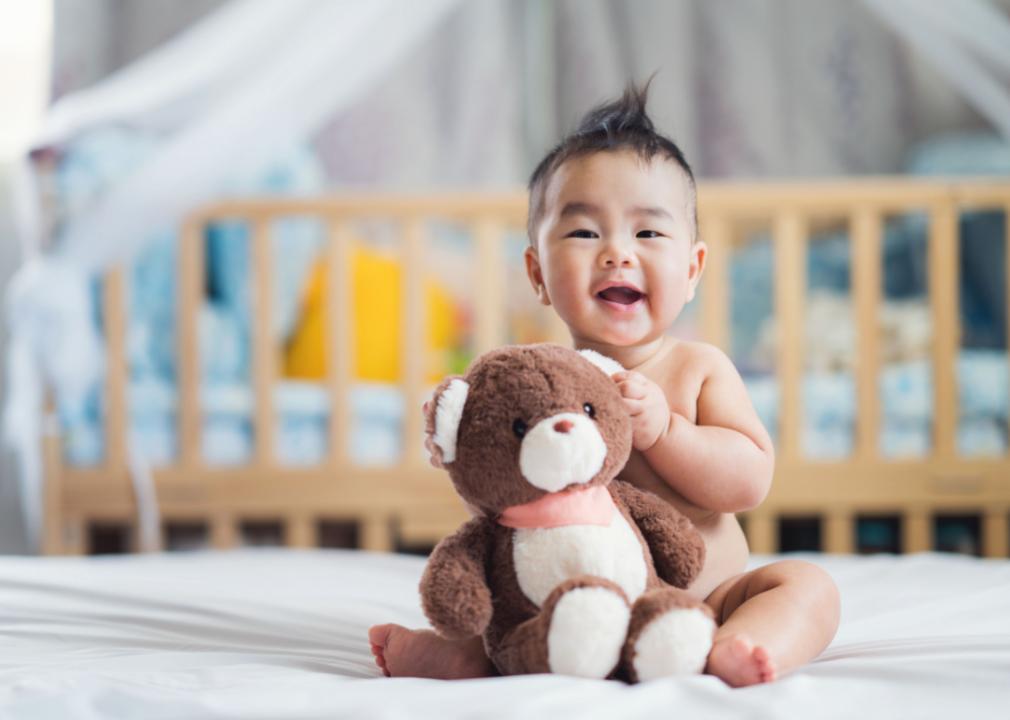
anek.soowannaphoom // Shutterstock
2021: Yian
Asian baby boy holding a teddy bear.
Yian is a traditional Chinese name meaning “swallow”—like the bird, not the act of taking down food or drink. Although not as common as other Chinese names like Yan, meaning “beautiful,” and Yuan, meaning “round” or “spherical,” the name did peak in 2021.
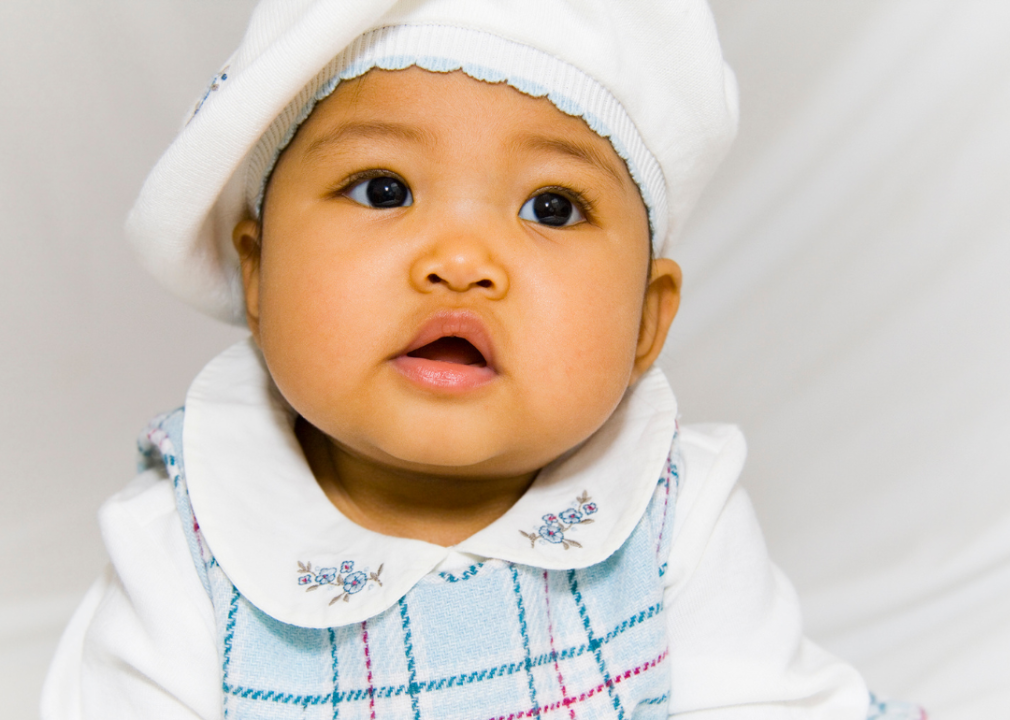
Canva
2022: Caprice
Asian girl in a white beret.
The name Caprice might first bring to mind the classic Chevrolet car, but it is also a name that’s garnered attention recently, which may be thanks to the 2022 book by Coe Booth that shares the name. In contrast to Caprice’s traditional meaning of “whimsical” or “playful,” this novel tackles the serious story of a girl named Caprice who looks forward to what her future holds while simultaneously confronting the abuse in her past. Booth’s book may be giving the name a resurgence of sorts—it peaked on the SSA list in 1966 at #944.
Data reporting by Luke Hicks. Story editing by Jaimie Etkin. Copy editing by Lois Hince. Photo selection by Ania Antecka.